Year in photos: The Chesapeake watershed in 2018
A wide look at a diverse region shows we’re all connected
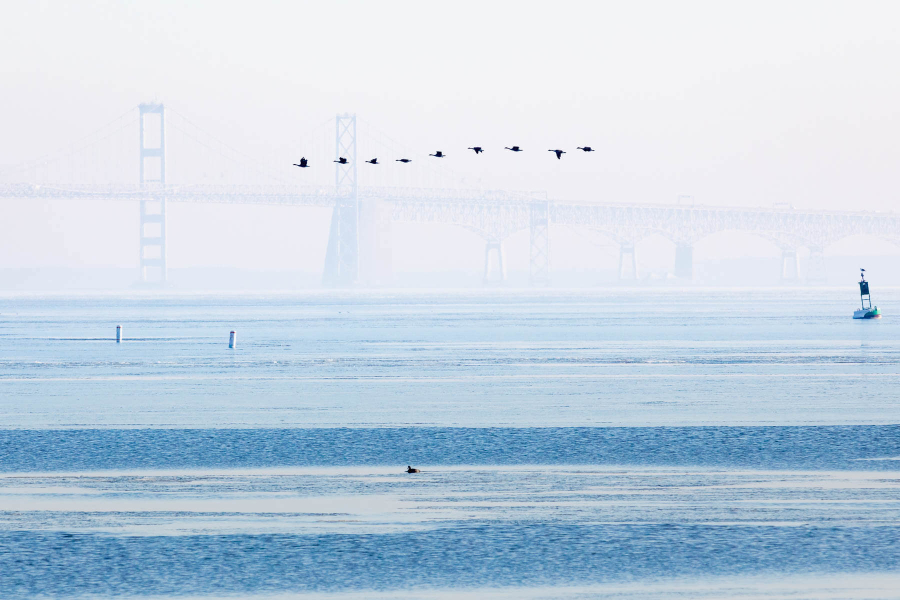
The Chesapeake Bay watershed looks very different depending on where you’re standing. This time of year, it’s a bit colder in Cooperstown, New York, than in Norfolk, Virginia. And the landscape is a little flatter on the Delmarva peninsula than it is at Harpers Ferry.
Also varying widely are the lives of residents across the 64,000-square-mile region, and you don’t even have to travel hundreds of miles to see the contrast.
Lancaster County, Pennsylvania, for example, is home to members of the Plain Sect community like the owner of a dairy farm I visited this year. Esh Farm worked with the Pequea Creek Watershed Association and the Lancaster County Conservation District to restore a stream using an array of practices that protect water and livestock, which earned the farm a Governor’s Award for Environmental Excellence.
It’s also home to seven-year-old Jaiden Lawrence, who I met near his home in the city of Lancaster, where he enjoys watering shade trees and the native plants growing in the rain garden installed by the city just feet from his front door.
In looking through our photos from the past year, I saw that many of the people whose stories we feature have a similarly keen awareness of their place in the watershed and their environmental impact.
However, while most people want to improve the environment around them, only a minority of residents recognize that they are contributing to water pollution, according to the Chesapeake Bay Program’s Citizen Stewardship Index.
The bright side is that as more residents begin to see their impact and see their connection to the rest of the watershed, the more they will recognize that protecting the health of water locally and downstream is everyone’s responsibility. And they will be even more motivated to do their part—whether it’s installing a rain barrel at home, enrolling in farm programs to protect streams or finding opportunities to volunteer with a local environmental organization.
It’s my hope that our photography shows important relationships. Farmers who live along the freshwater banks of the Susquehanna River have an impact on the watermen who tong for oysters in the Bay, and a child learning about the environment in Washington, D.C. could someday pass on a sense of stewardship to the next generation.
At a basic level, however, the goal is to show what’s at stake, in terms of people’s quality of life and biodiversity, and to show how the two are connected. Oysters, blue crabs and fish are important to the health of the Bay even when they don’t end up on our plates. And where nature thrives, ultimately it makes people happier and healthier as well.
For more photography from across the watershed follow @chesbayprogram on Instagram!
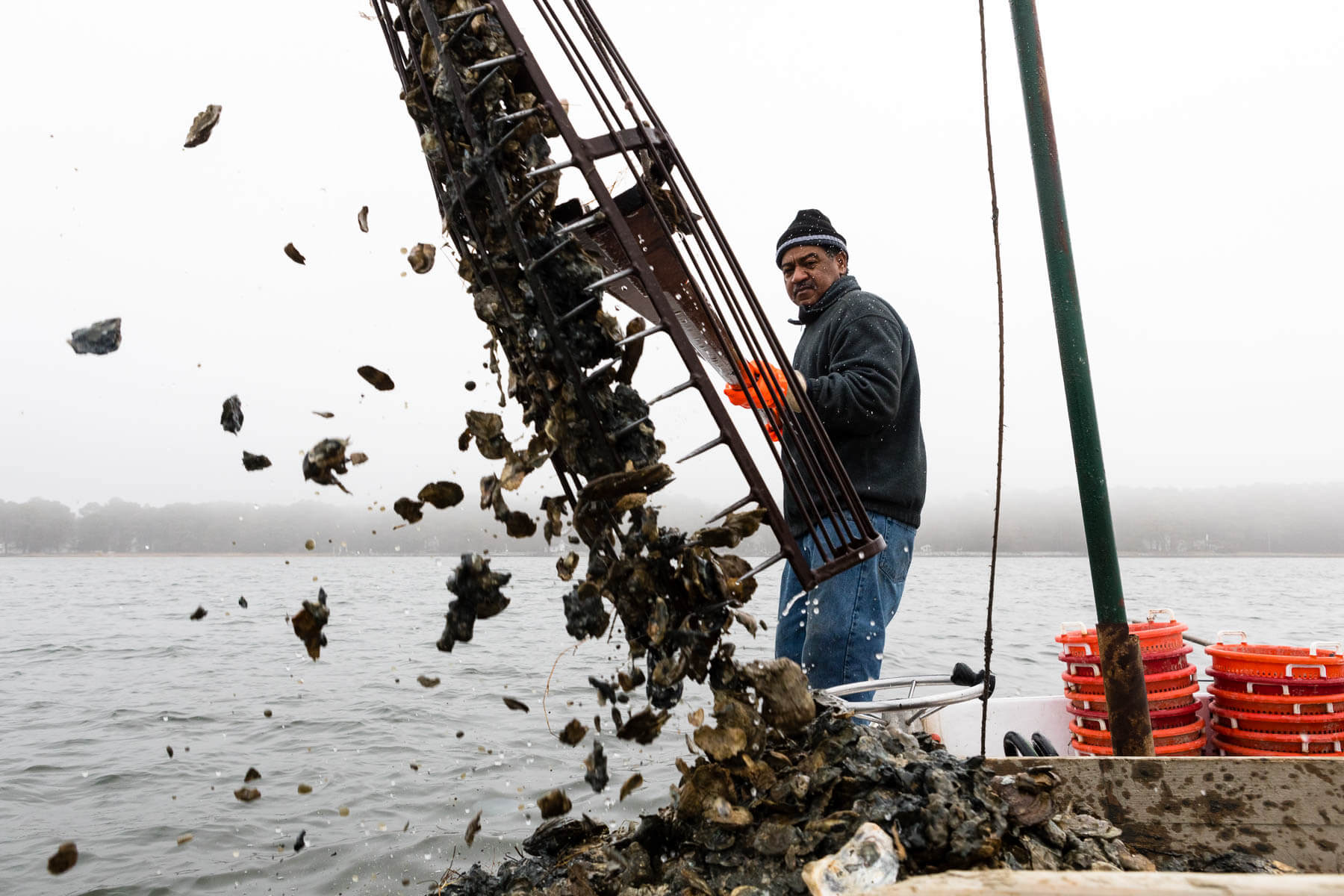 Capt. Tyrone Meredith harvests oysters with a hand tong near Broad Creek, a tributary of the Choptank River in Talbot County, Md., on Feb. 20, 2018. Meredith finds his summer charter fishing business to be more fruitful, and remembers catching many more oysters 30 years ago. "You could catch 75 bushels by nine o’clock in the morning," Meredith said. "What we usually have is probably eight or 10 bushels now.” (Photo by Will Parson/Chesapeake Bay Program)
Capt. Tyrone Meredith harvests oysters with a hand tong near Broad Creek, a tributary of the Choptank River in Talbot County, Md., on Feb. 20, 2018. Meredith finds his summer charter fishing business to be more fruitful, and remembers catching many more oysters 30 years ago. "You could catch 75 bushels by nine o’clock in the morning," Meredith said. "What we usually have is probably eight or 10 bushels now.” (Photo by Will Parson/Chesapeake Bay Program)
 Shipwright Joe Connor, left, and apprentices Zach Haroth, facing, and Michael Allen work on the Edna E. Lockwood at the Chesapeake Bay Maritime Museum in St. Michaels, Md., on Feb. 20, 2018. Edna is a bugeye, a larger predecessor to the skipjack, built in 1899 with a log canoe hull—a feature that carries over from smaller, earlier workboats used to harvest oysters. (Photo by Will Parson/Chesapeake Bay Program)
Shipwright Joe Connor, left, and apprentices Zach Haroth, facing, and Michael Allen work on the Edna E. Lockwood at the Chesapeake Bay Maritime Museum in St. Michaels, Md., on Feb. 20, 2018. Edna is a bugeye, a larger predecessor to the skipjack, built in 1899 with a log canoe hull—a feature that carries over from smaller, earlier workboats used to harvest oysters. (Photo by Will Parson/Chesapeake Bay Program)
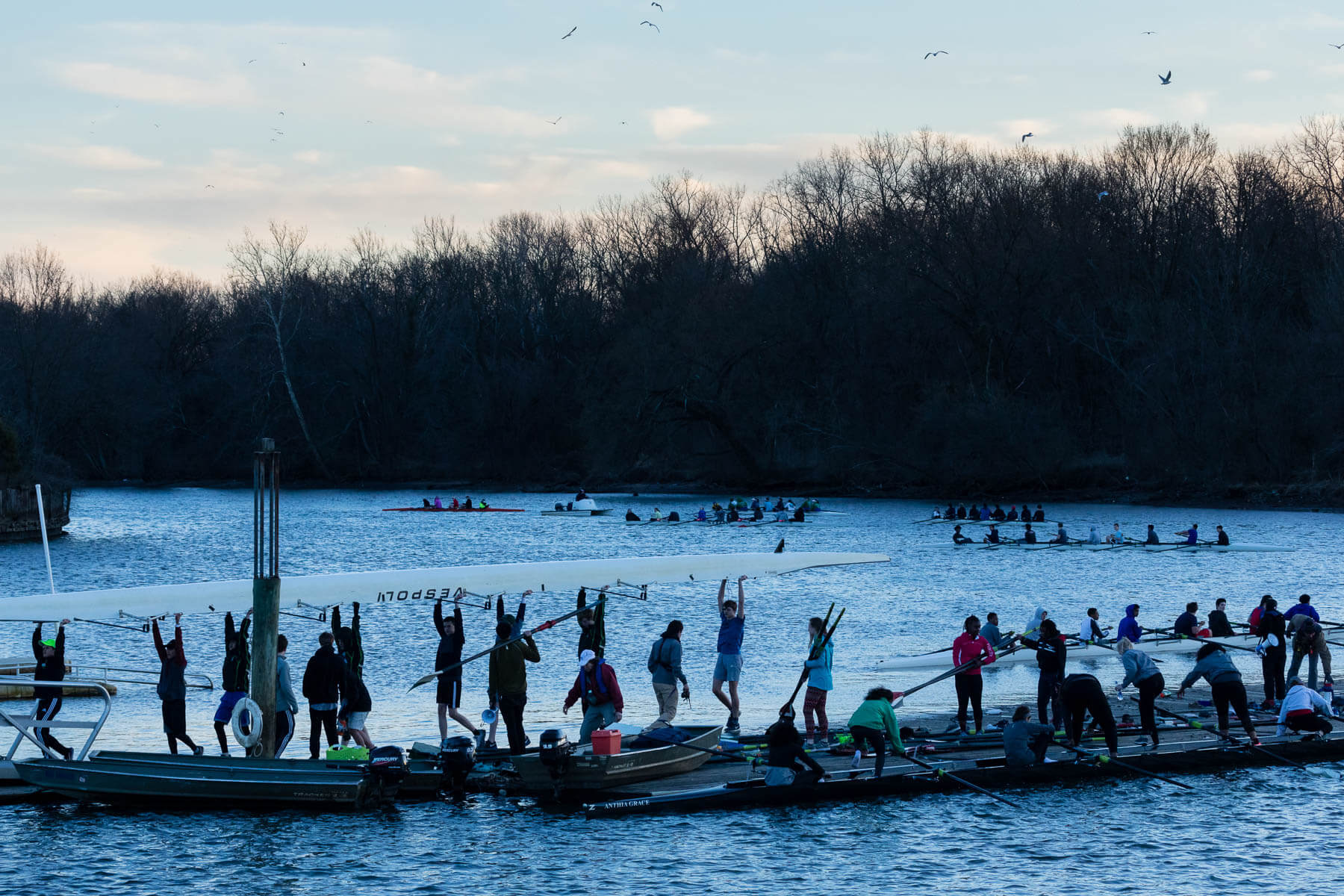 Youth crew teams return to dock at Bladensburg Waterfront Park on the Anacostia River on March 5, 2018. (Photo by Will Parson/Chesapeake Bay Program)
Youth crew teams return to dock at Bladensburg Waterfront Park on the Anacostia River on March 5, 2018. (Photo by Will Parson/Chesapeake Bay Program)
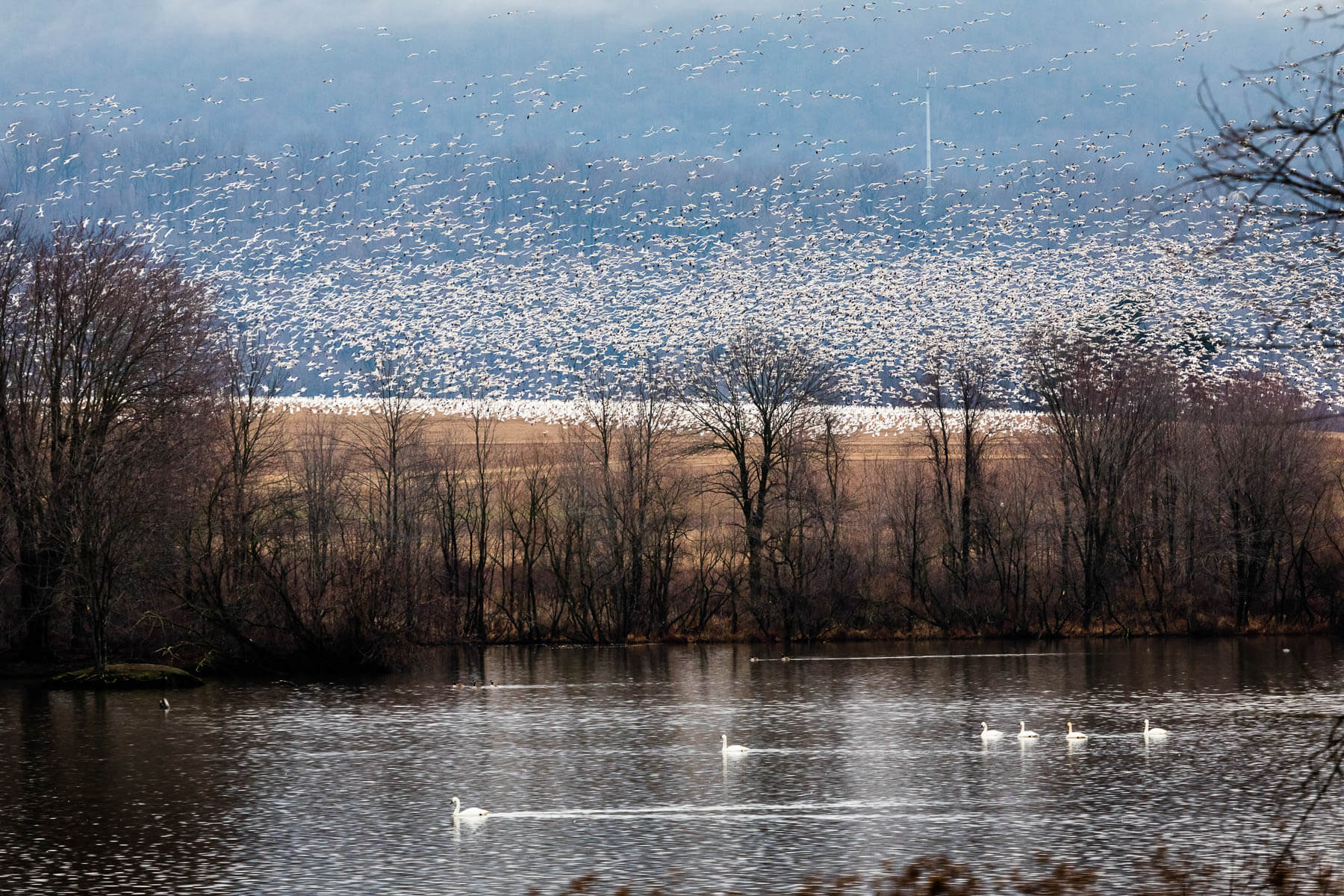 Tens of thousands of migrating snow geese flock to a farm field near Middle Creek Wildlife Management Area while tundra swans swim in Lancaster County, Penn., on February 25, 2018. Middle Creek hosted a record 200,000 snow geese the week before. (Photo by Will Parson/Chesapeake Bay Program)
Tens of thousands of migrating snow geese flock to a farm field near Middle Creek Wildlife Management Area while tundra swans swim in Lancaster County, Penn., on February 25, 2018. Middle Creek hosted a record 200,000 snow geese the week before. (Photo by Will Parson/Chesapeake Bay Program)
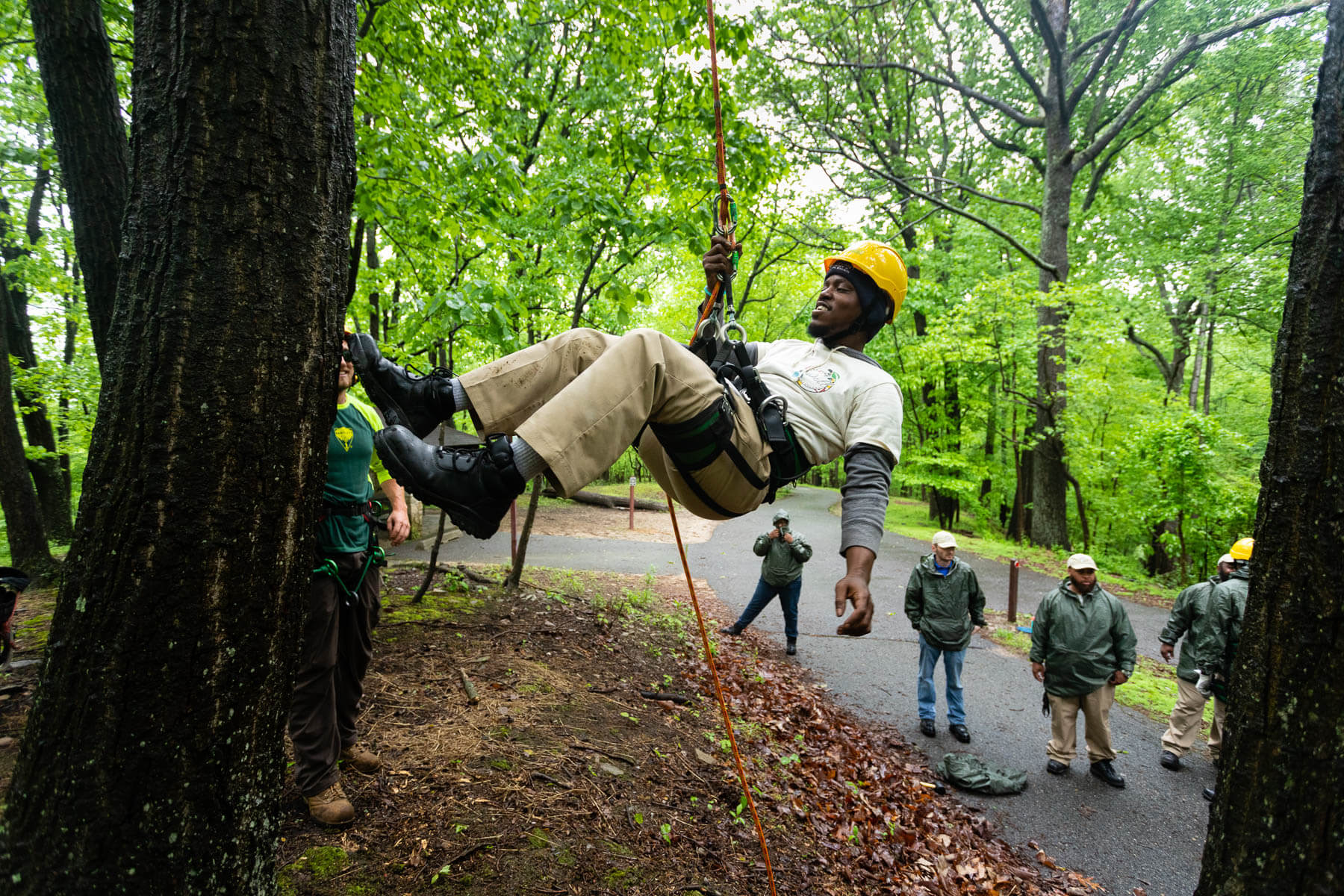 Andre Neal, 36, practices tree climbing at Patapsco Valley State Park in Carroll County, Md., on May 17, 2018. "My forearms are on fire!" Neal said, after climbing a second time. Trainees in the Maryland Department of Natural Resource's Work2LiveWELL program completed labor intensive instruction and field trips geared toward developing skills applicable to green careers. (Photo by Will Parson/Chesapeake Bay Program)
Andre Neal, 36, practices tree climbing at Patapsco Valley State Park in Carroll County, Md., on May 17, 2018. "My forearms are on fire!" Neal said, after climbing a second time. Trainees in the Maryland Department of Natural Resource's Work2LiveWELL program completed labor intensive instruction and field trips geared toward developing skills applicable to green careers. (Photo by Will Parson/Chesapeake Bay Program)
 John Henry, 89, stands inside the Pamunkey Shad Hatchery on the Pamunkey Indian Reservation in Virginia on April 30, 2018. Henry is in charge of the hatchery, which has operated since 1918 on the Pamunkey River. In 2018 the hatchery was not active because not enough American shad were present in the river to be caught. (Photo by Will Parson/Chesapeake Bay Program)
John Henry, 89, stands inside the Pamunkey Shad Hatchery on the Pamunkey Indian Reservation in Virginia on April 30, 2018. Henry is in charge of the hatchery, which has operated since 1918 on the Pamunkey River. In 2018 the hatchery was not active because not enough American shad were present in the river to be caught. (Photo by Will Parson/Chesapeake Bay Program)
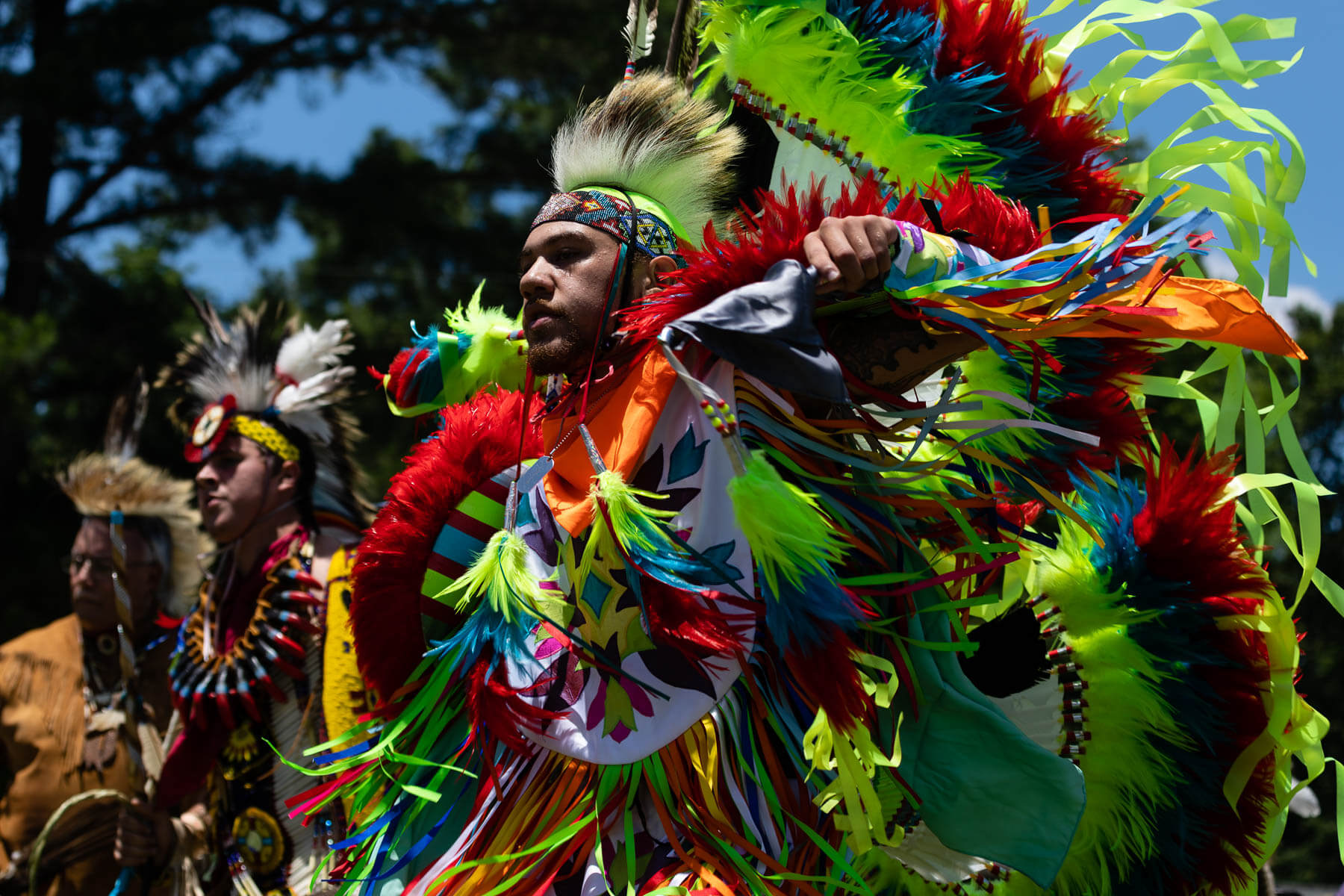 Brandon Adkins dances a crow hop during the Mattaponi Pow Wow on the Mattaponi Reservation in King William County, Va. on June 16, 2018. (Photo By Kaitlyn Dolan/Chesapeake Bay Program)
Brandon Adkins dances a crow hop during the Mattaponi Pow Wow on the Mattaponi Reservation in King William County, Va. on June 16, 2018. (Photo By Kaitlyn Dolan/Chesapeake Bay Program)
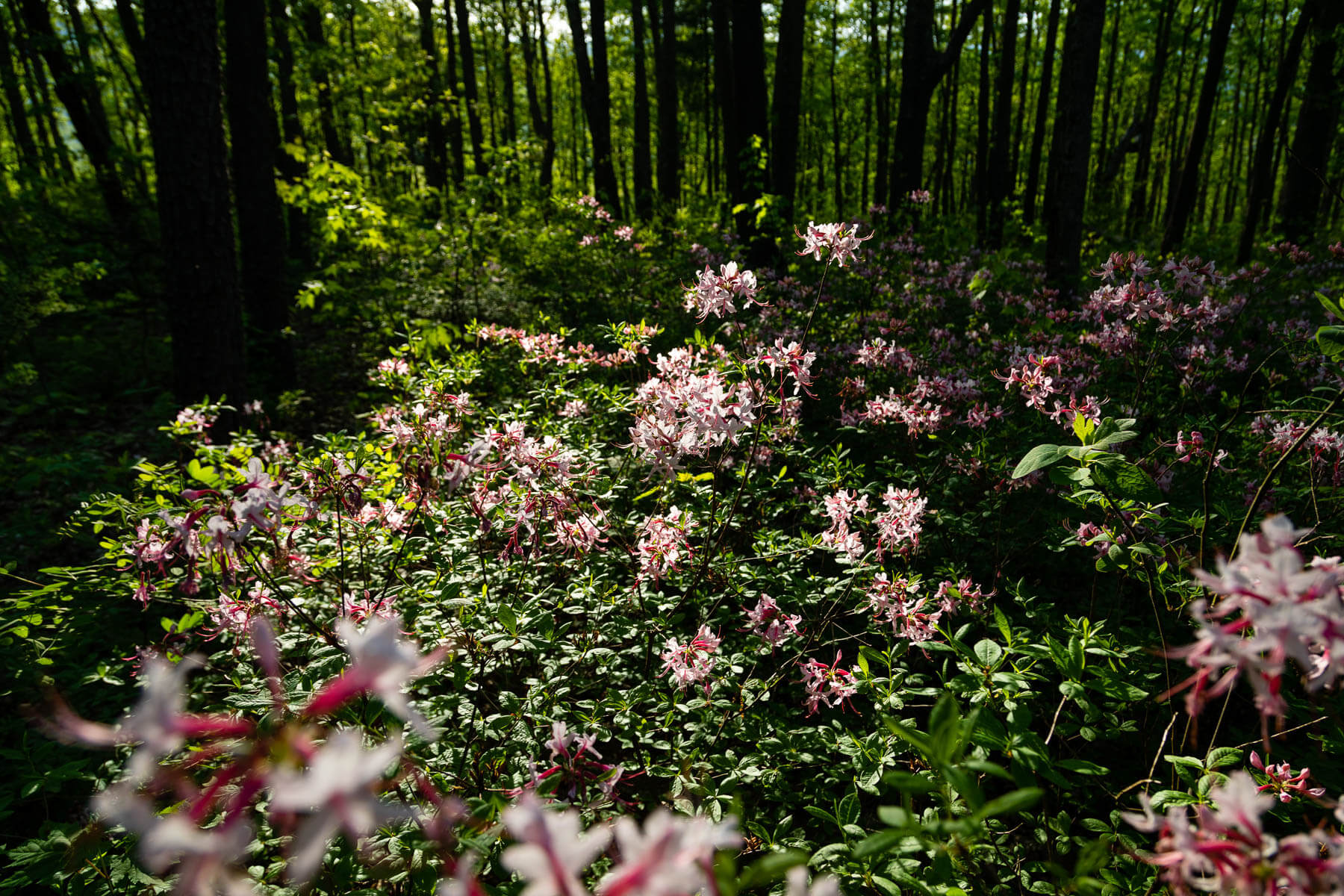 Pinxter azaleas bloom in George Washington and Jefferson National Forest in Alleghany County, Va., on May 12, 2018. (Photo by Will Parson/Chesapeake Bay Program)
Pinxter azaleas bloom in George Washington and Jefferson National Forest in Alleghany County, Va., on May 12, 2018. (Photo by Will Parson/Chesapeake Bay Program)
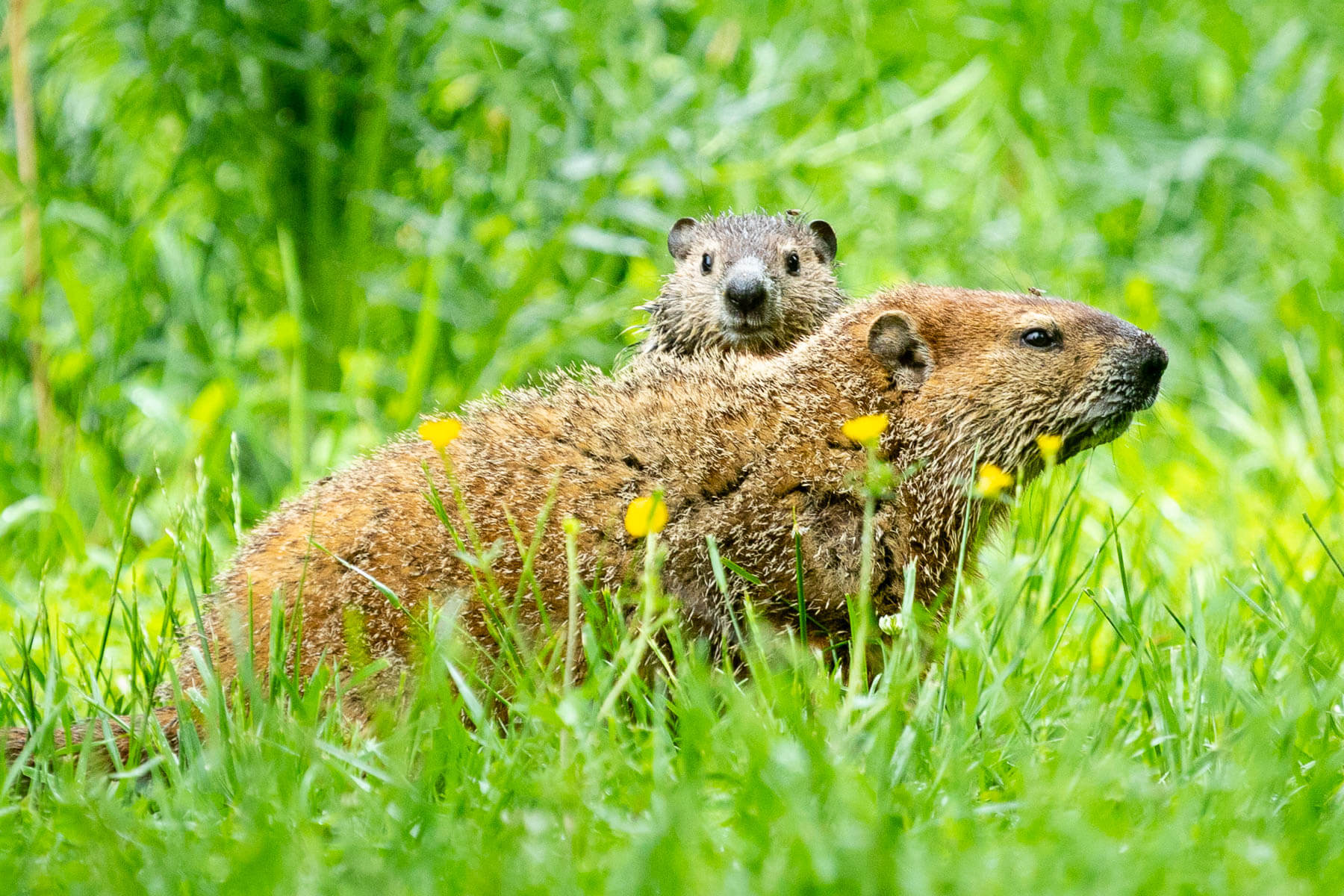 Wet with rain, a young groundhog, known as a chuckling, looks over its mother’s back at Patapsco Valley State Park in Carroll County, Md., on May 17, 2018. Groundhogs give birth to litters of two to six around April or May. (Photo by Will Parson/Chesapeake Bay Program)
Wet with rain, a young groundhog, known as a chuckling, looks over its mother’s back at Patapsco Valley State Park in Carroll County, Md., on May 17, 2018. Groundhogs give birth to litters of two to six around April or May. (Photo by Will Parson/Chesapeake Bay Program)
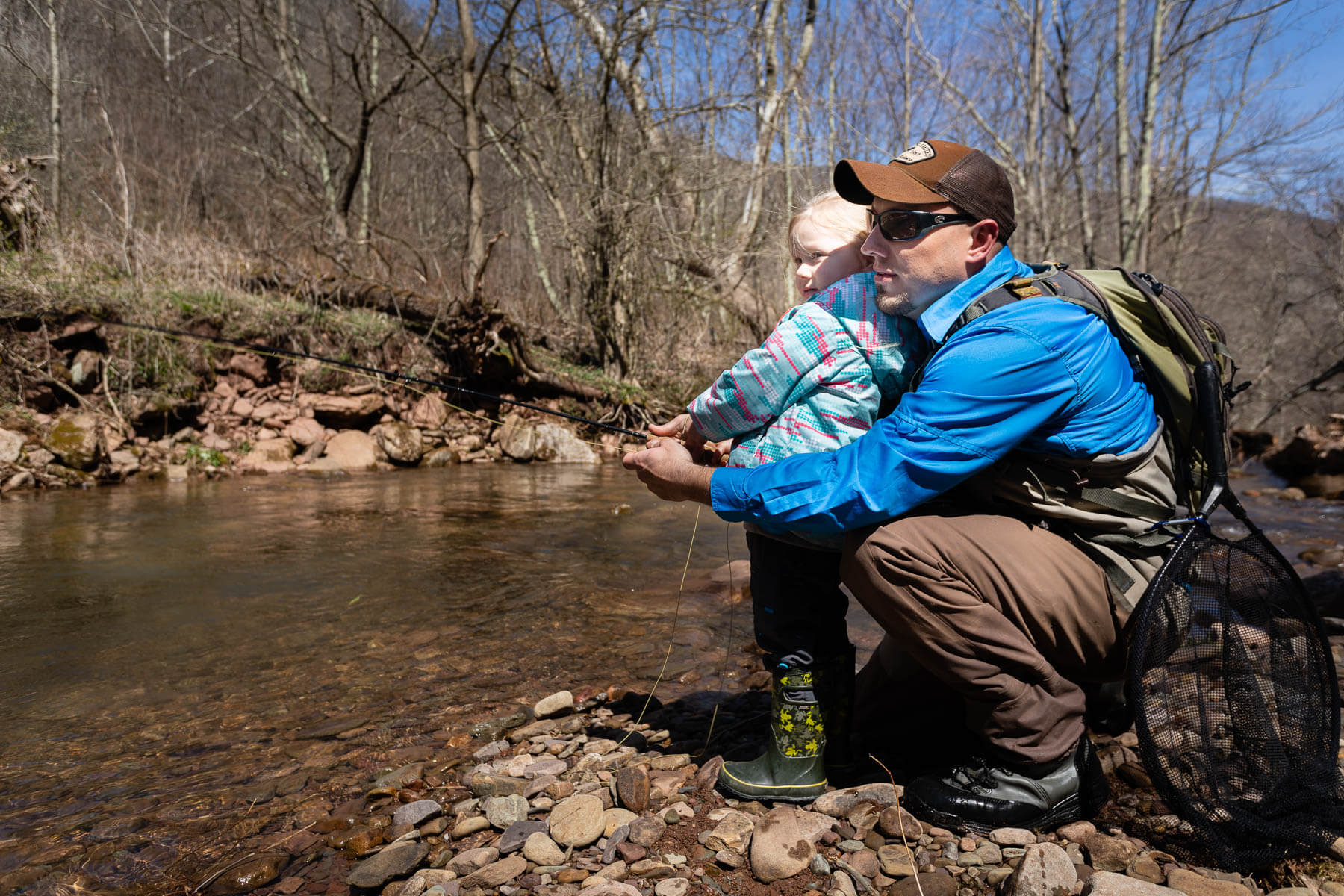 Dustin Wichterman of Trout Unlimited fishes with his daughter Brooklyn, 3, along Brushy Run, a tributary of Seneca Creek in Pendleton County, W.Va., on April 21, 2018. (Photo by Will Parson/Chesapeake Bay Program)
Dustin Wichterman of Trout Unlimited fishes with his daughter Brooklyn, 3, along Brushy Run, a tributary of Seneca Creek in Pendleton County, W.Va., on April 21, 2018. (Photo by Will Parson/Chesapeake Bay Program)
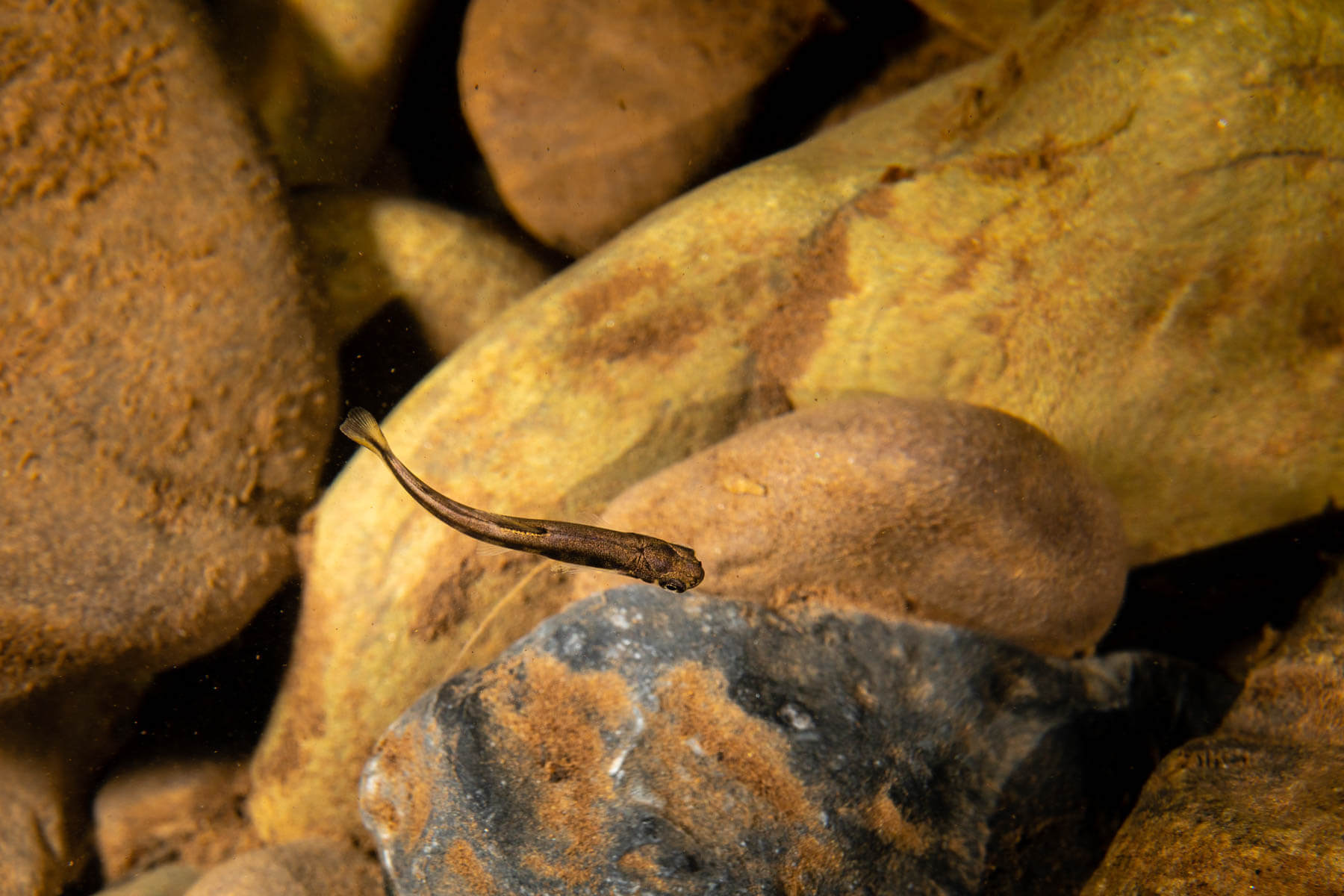 A brook trout parr swims in Seneca Creek in Pendleton County, W.Va., on April 21, 2018. (Photo by Will Parson/Chesapeake Bay Program)
A brook trout parr swims in Seneca Creek in Pendleton County, W.Va., on April 21, 2018. (Photo by Will Parson/Chesapeake Bay Program)
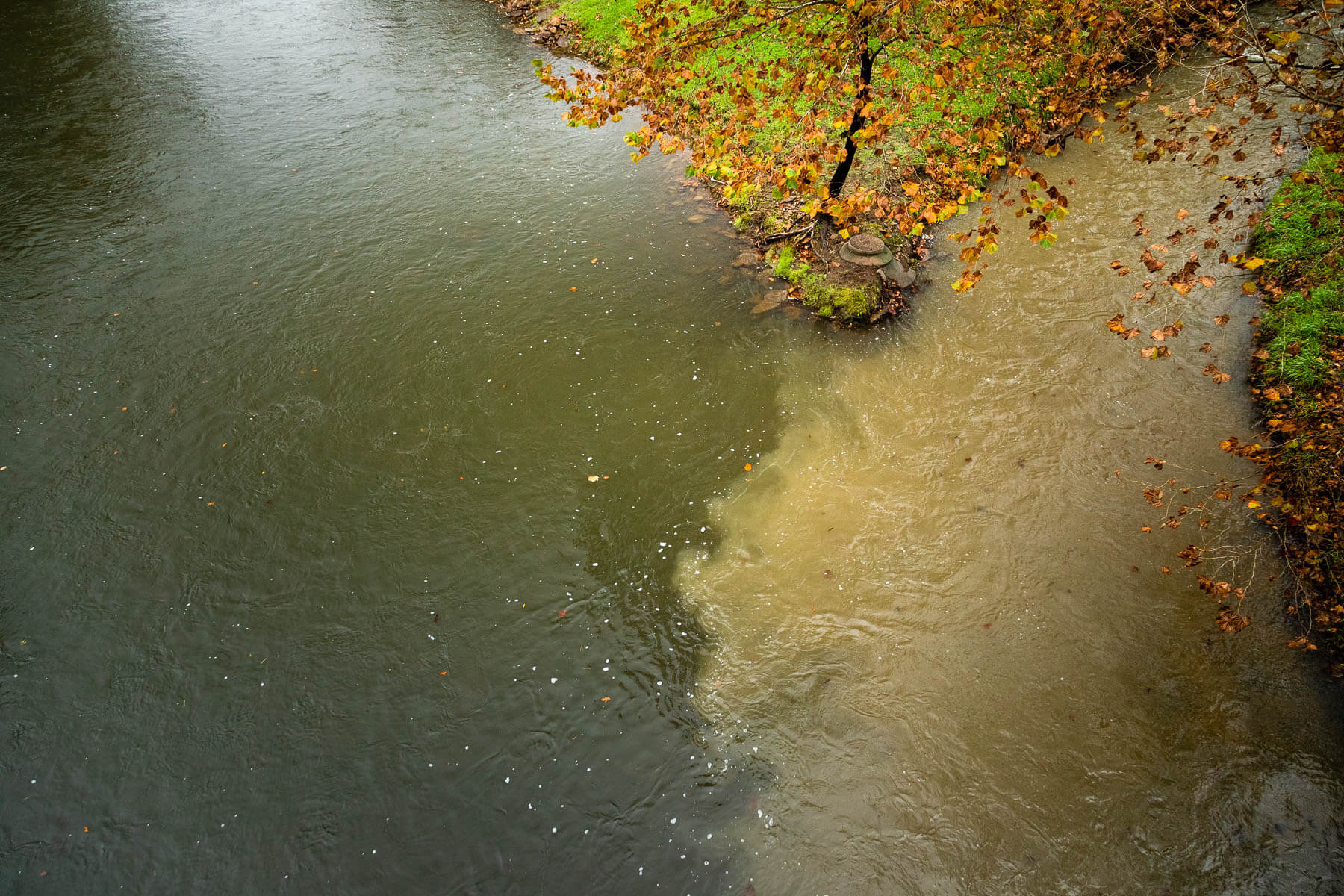 Sediment-laden water from Dillon Run meets the flow of the Cacapon River in eastern Hampshire County, W.Va., on Nov. 5, 2018. Storms dumped over an inch of rain on the region in recent days, leading to stormwater-powered erosion. (Photo by Will Parson/Chesapeake Bay Program)
Sediment-laden water from Dillon Run meets the flow of the Cacapon River in eastern Hampshire County, W.Va., on Nov. 5, 2018. Storms dumped over an inch of rain on the region in recent days, leading to stormwater-powered erosion. (Photo by Will Parson/Chesapeake Bay Program)
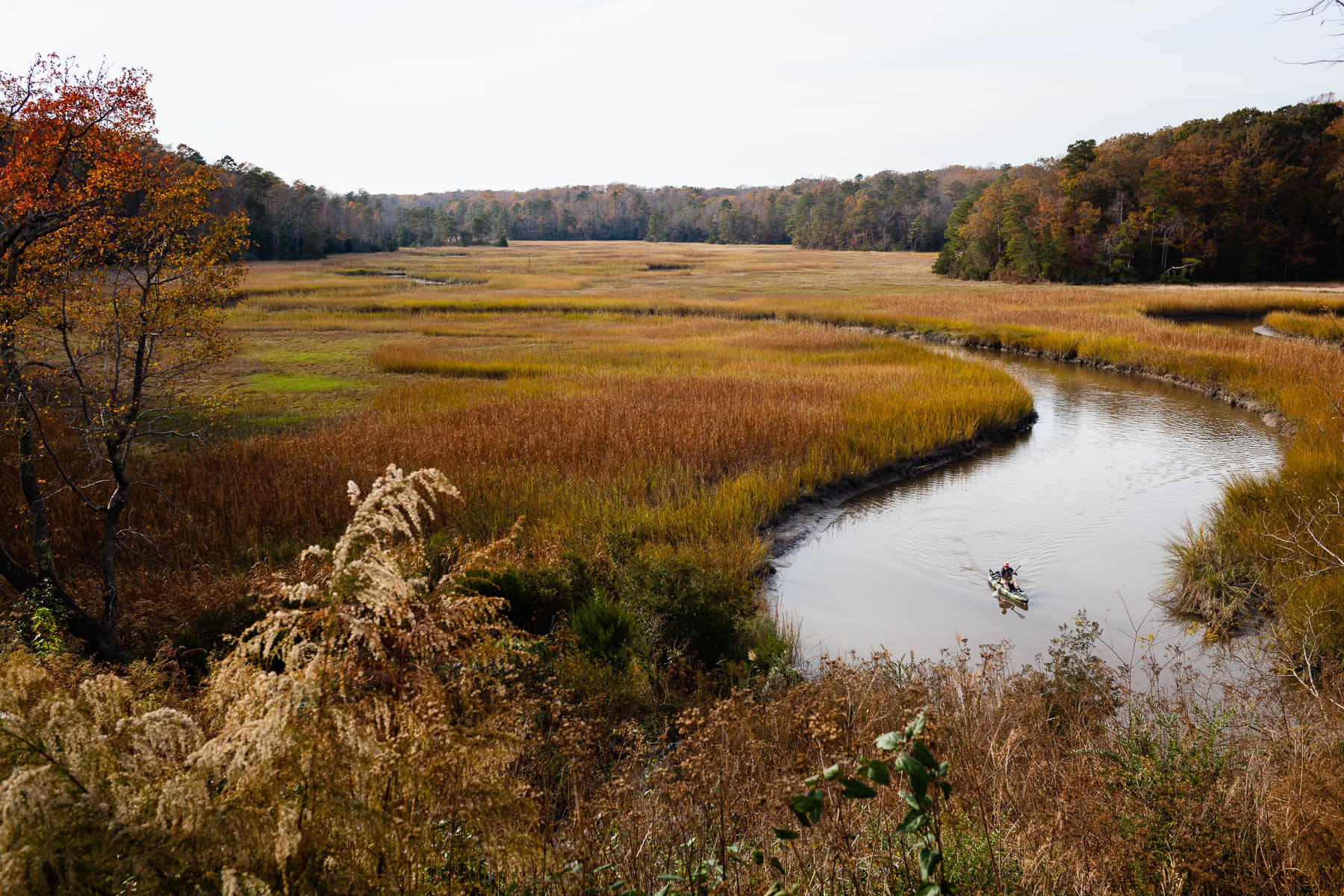 Mike Whetstone of Richmond, Va., kayaks through marsh on Taskinas Creek at York River State Park in James City County, Va., on Nov. 18, 2018. "It's beautiful back there," said Whetstone, who recalled paddling the marsh at a different time of year and seeing numerous fiddler crabs scattering from the muddy banks of the creek. "There were just thousands of them that day." (Photo by Will Parson/Chesapeake Bay Program)
Mike Whetstone of Richmond, Va., kayaks through marsh on Taskinas Creek at York River State Park in James City County, Va., on Nov. 18, 2018. "It's beautiful back there," said Whetstone, who recalled paddling the marsh at a different time of year and seeing numerous fiddler crabs scattering from the muddy banks of the creek. "There were just thousands of them that day." (Photo by Will Parson/Chesapeake Bay Program)
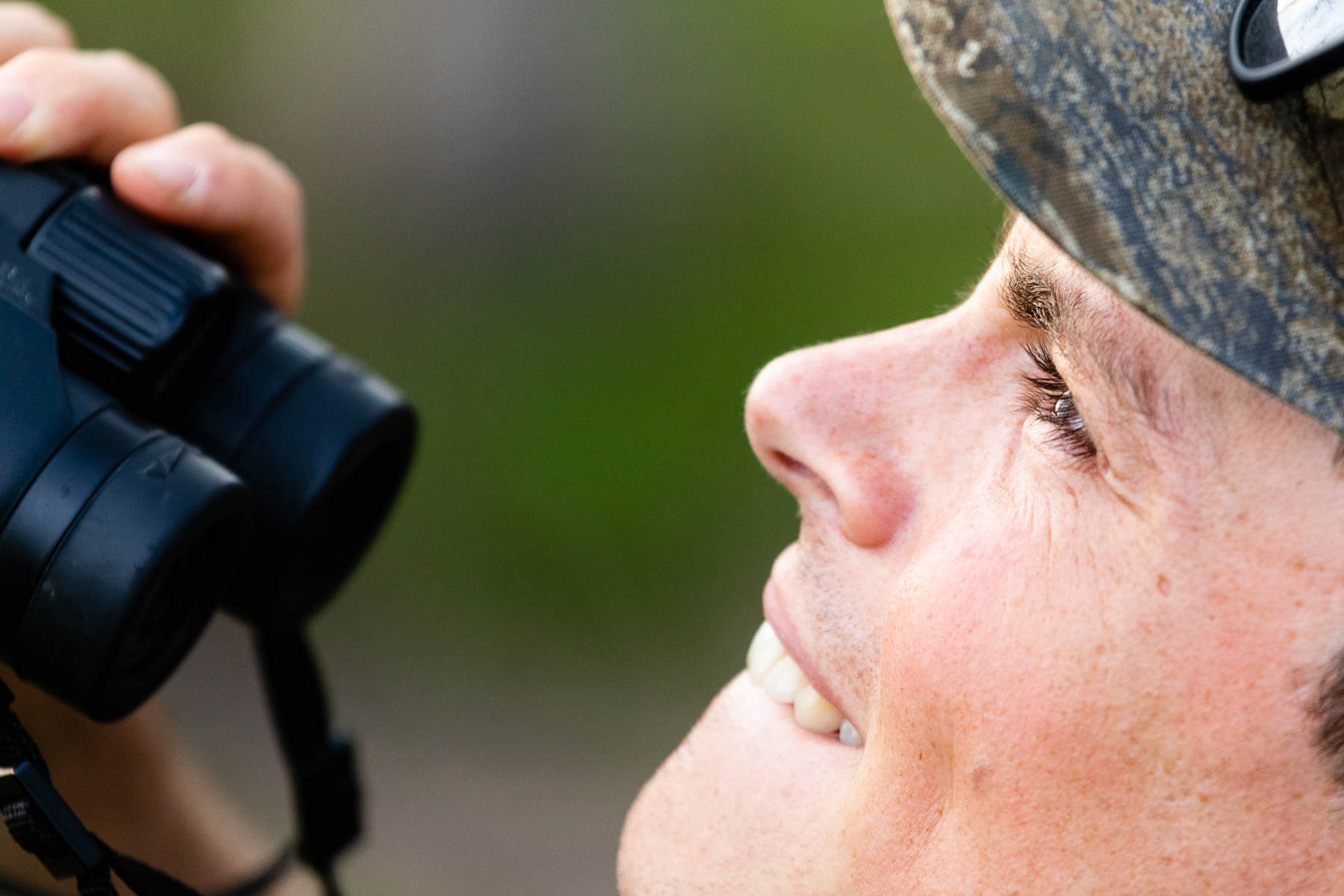 Ryan Davis of the Alliance for the Chesapeake Bay watches for birds in Loudoun County, Va., on May 3, 2018. (Photo by Will Parson/Chesapeake Bay Program)
Ryan Davis of the Alliance for the Chesapeake Bay watches for birds in Loudoun County, Va., on May 3, 2018. (Photo by Will Parson/Chesapeake Bay Program)
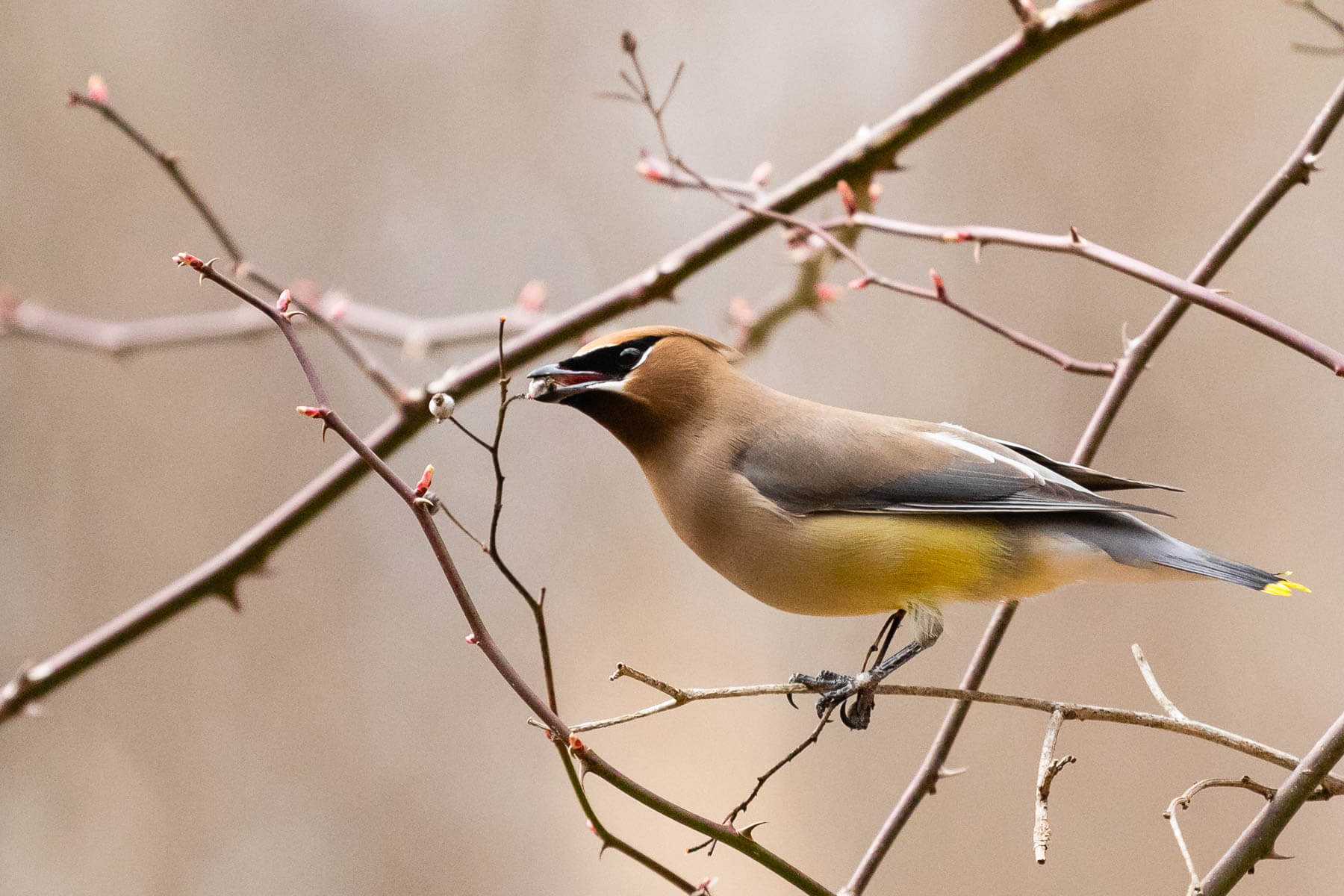 A cedar waxwing balances itself before reaching for berries on a hawthorn tree along the Spring Creek Canyon Trail in Centre County, Pa., on April 11, 2018. (Photo by Will Parson/Chesapeake Bay Program)
A cedar waxwing balances itself before reaching for berries on a hawthorn tree along the Spring Creek Canyon Trail in Centre County, Pa., on April 11, 2018. (Photo by Will Parson/Chesapeake Bay Program)
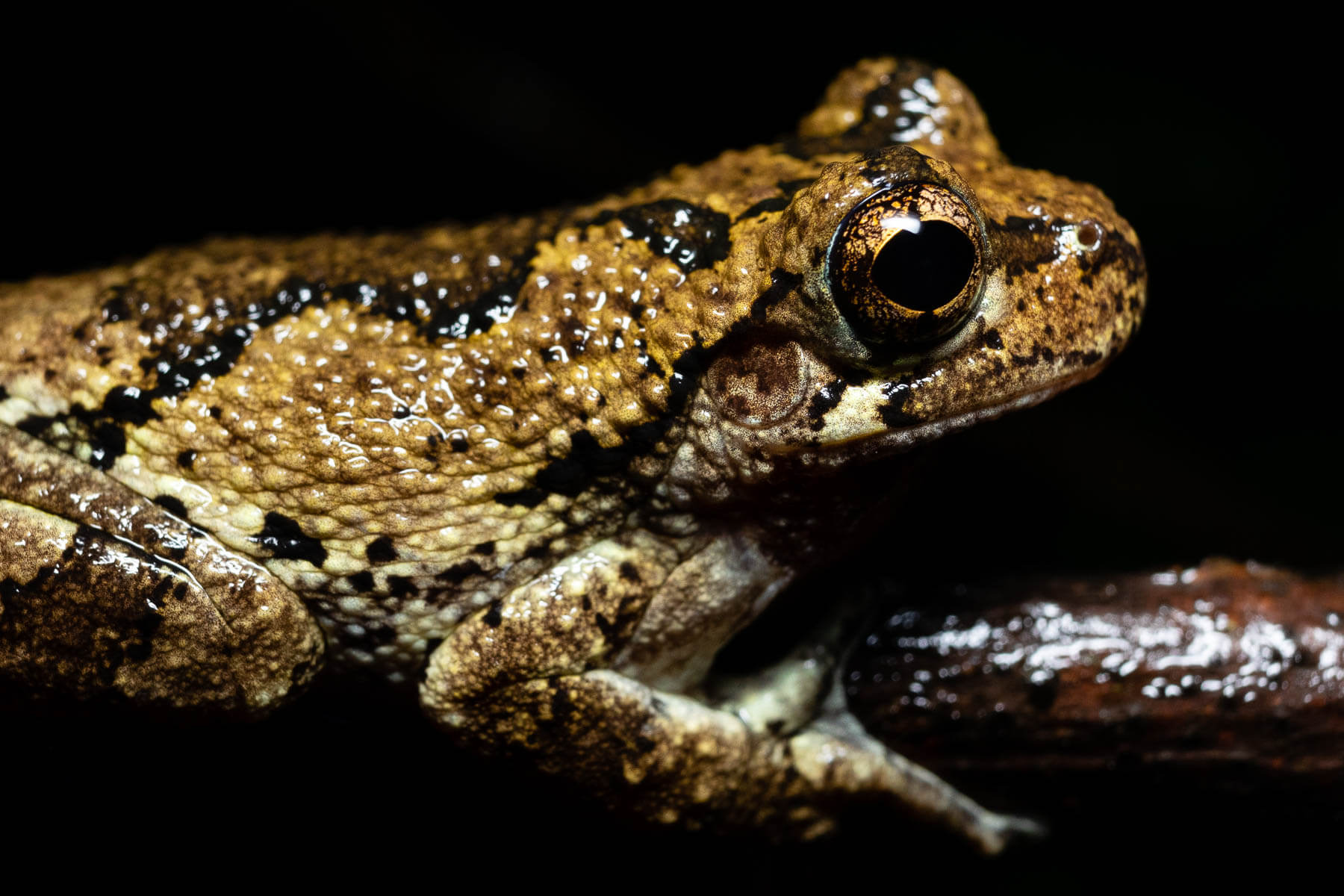 A Cope's gray tree frog perches in a tree as several of the amphibians make mating calls near a flooded forest edge in Annapolis, Md., on May 17, 2018. (Photo by Will Parson/Chesapeake Bay Program)
A Cope's gray tree frog perches in a tree as several of the amphibians make mating calls near a flooded forest edge in Annapolis, Md., on May 17, 2018. (Photo by Will Parson/Chesapeake Bay Program)
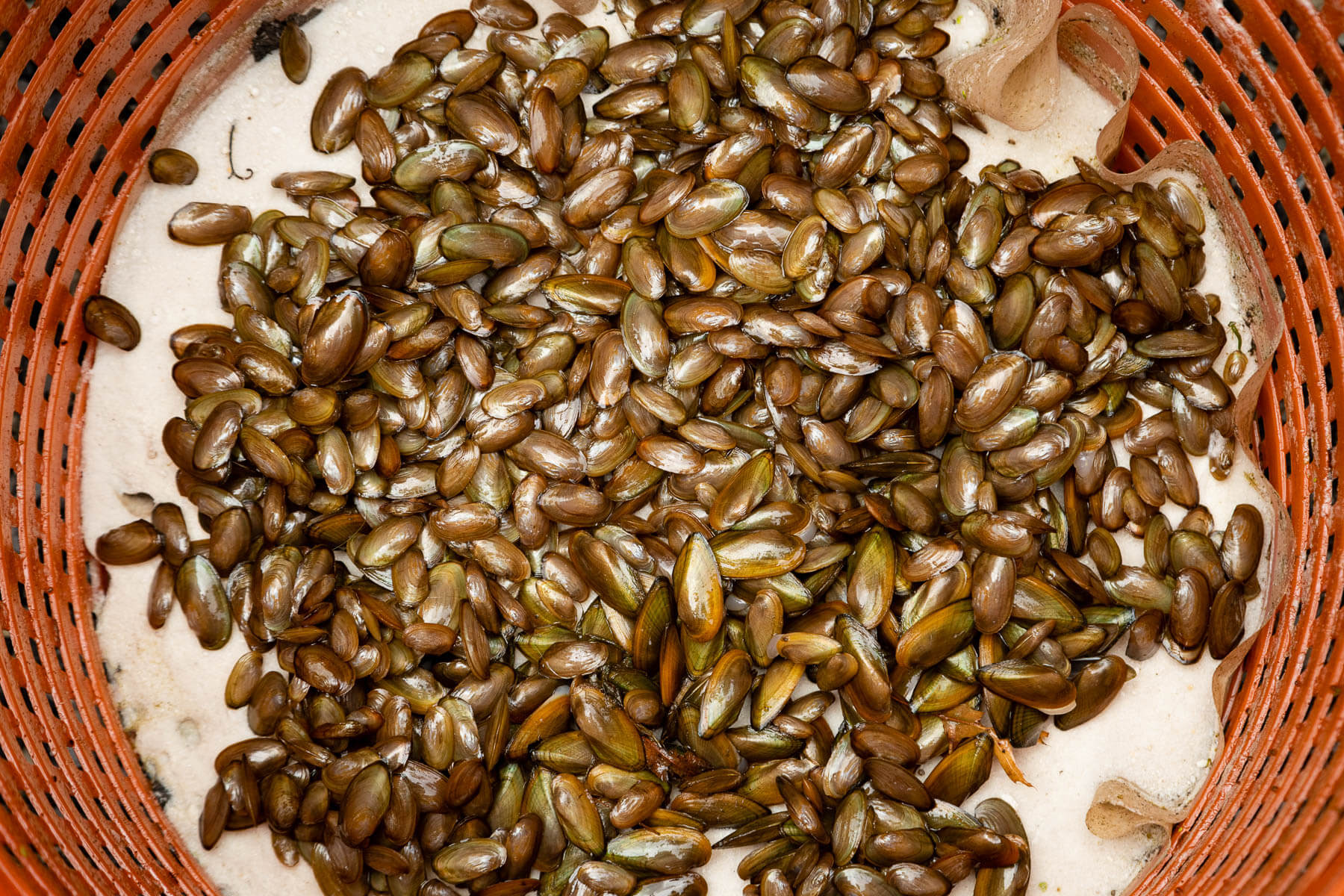 Freshwater mussels from two native species, alewife floater and Eastern pondmussel, are placed in a basket that will be their home as they grow in a pond at the headquarters of the Anacostia Watershed Society in Bladensburg, Md., on Aug. 22, 2018. The nonprofit placed 5,600 hatchery-raised mussels at seven sites along the Anacostia River to assess survival and reproduction for future restoration efforts. The Anacostia was found to be home to eight native species of mussel, which can each filter roughly 10 gallons of water daily. (Photo by Will Parson/Chesapeake Bay Program)
Freshwater mussels from two native species, alewife floater and Eastern pondmussel, are placed in a basket that will be their home as they grow in a pond at the headquarters of the Anacostia Watershed Society in Bladensburg, Md., on Aug. 22, 2018. The nonprofit placed 5,600 hatchery-raised mussels at seven sites along the Anacostia River to assess survival and reproduction for future restoration efforts. The Anacostia was found to be home to eight native species of mussel, which can each filter roughly 10 gallons of water daily. (Photo by Will Parson/Chesapeake Bay Program)
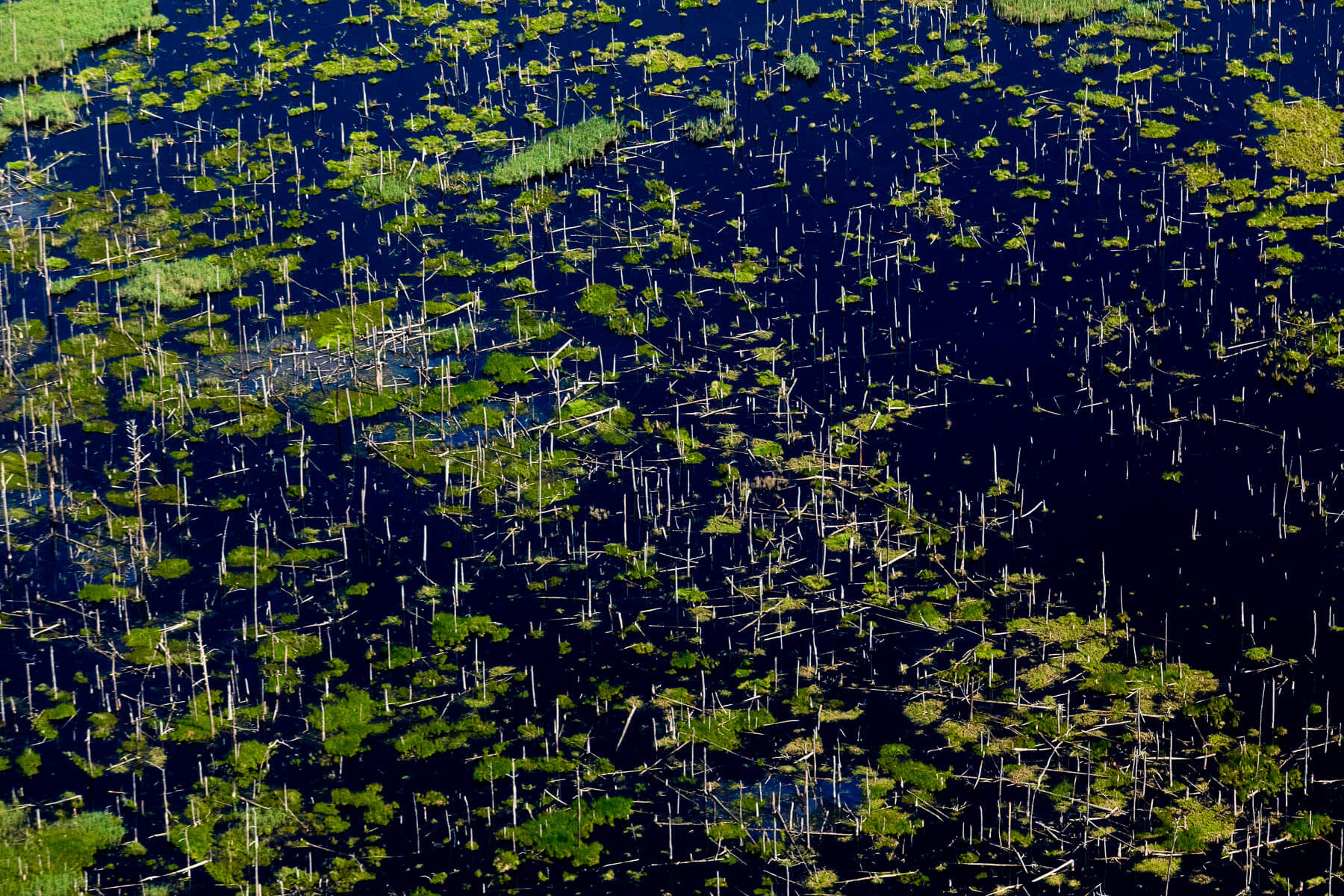 Dead loblolly pines cast shadows over salt marsh at Blackwater National Wildlife Refuge in Dorchester County, Md., on June 5, 2018. Sea level rise and land subsidence result in brackish water intruding on forested land and killing trees. A study by the Virginia Institute of Marine Science shows that roughly 100,000 acres of coastal forest in the Chesapeake Bay region have died since the 1850s—about half what once existed. (Photo by Will Parson/Chesapeake Bay Program)
Dead loblolly pines cast shadows over salt marsh at Blackwater National Wildlife Refuge in Dorchester County, Md., on June 5, 2018. Sea level rise and land subsidence result in brackish water intruding on forested land and killing trees. A study by the Virginia Institute of Marine Science shows that roughly 100,000 acres of coastal forest in the Chesapeake Bay region have died since the 1850s—about half what once existed. (Photo by Will Parson/Chesapeake Bay Program)
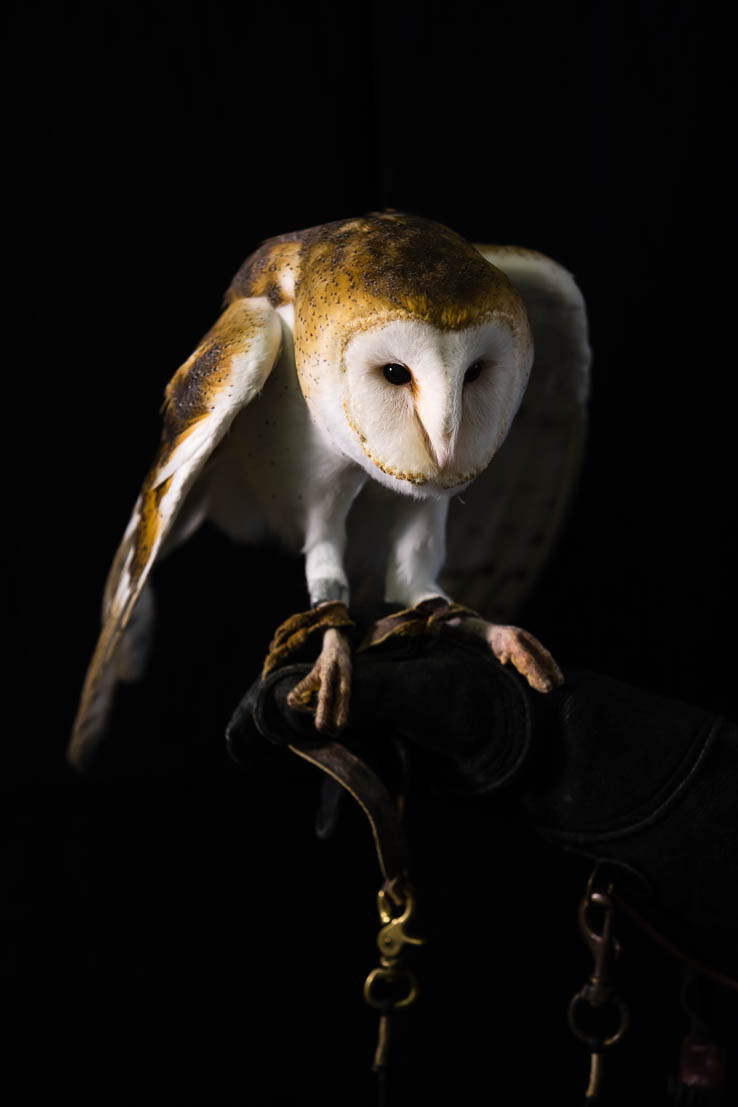 Jupiter is a non-releasable barn owl that lives at Tuckahoe State Park in Caroline County, Md., seen on Jan. 17, 2018. Non-releasable raptors, or birds of prey, live in an aviary at the park and travel throughout Maryland as part of the park's Scales and Tales educational program. (Photo by Will Parson/Chesapeake Bay Program)
Jupiter is a non-releasable barn owl that lives at Tuckahoe State Park in Caroline County, Md., seen on Jan. 17, 2018. Non-releasable raptors, or birds of prey, live in an aviary at the park and travel throughout Maryland as part of the park's Scales and Tales educational program. (Photo by Will Parson/Chesapeake Bay Program)
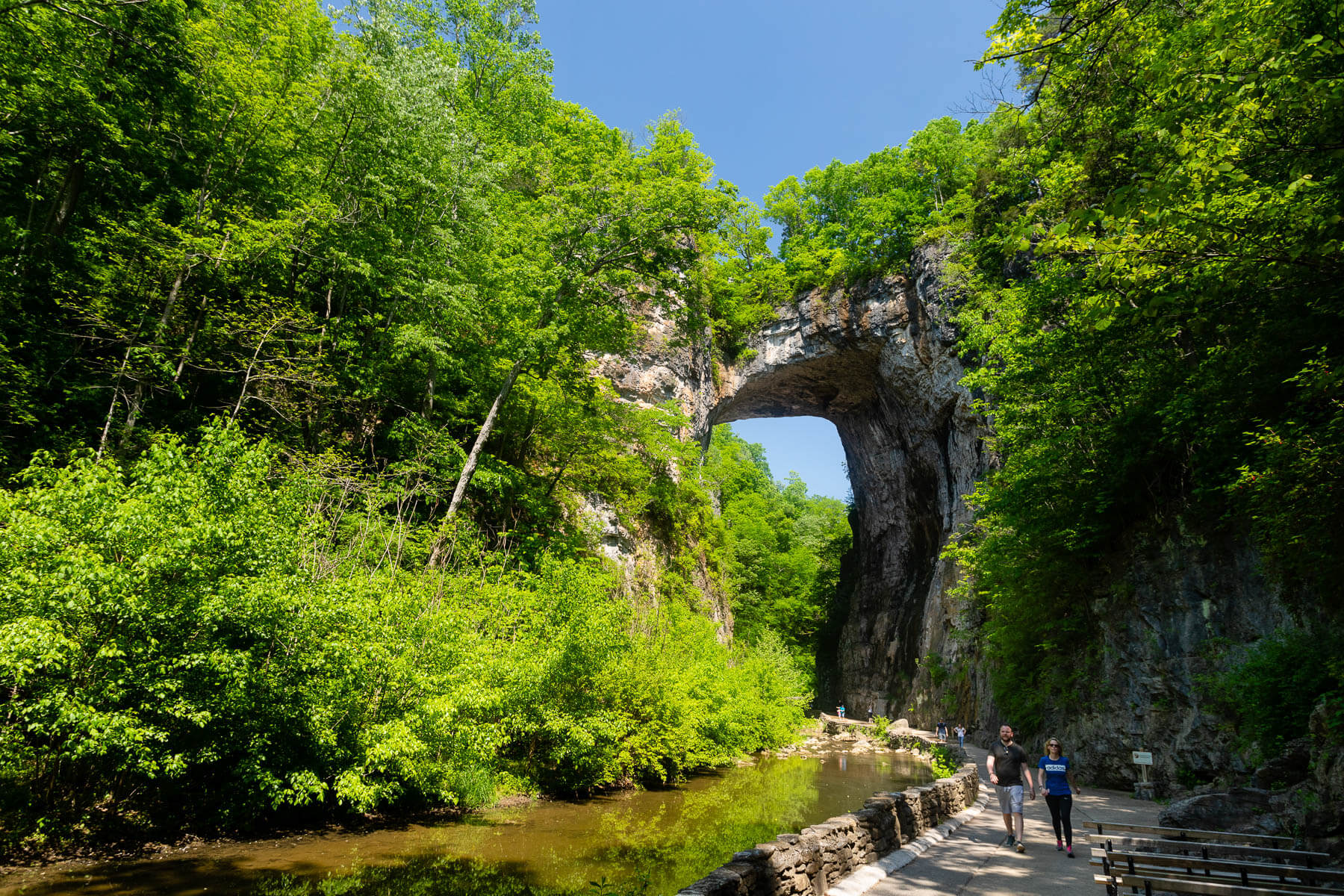 Natural Bridge in Rockbridge County, Va., is seen on May 13, 2018. The 215-foot arch is carved through 500 million-year-old limestone by Cedar Creek, a tributary of the James River. Sacred to the Monacans, an eastern Siouan nation who have lived in Virginia for up to 10,000 years, the rock face bears the initials of George Washington, who surveyed the area, and was once owned by Thomas Jefferson. (Photo by Will Parson/Chesapeake Bay Program)
Natural Bridge in Rockbridge County, Va., is seen on May 13, 2018. The 215-foot arch is carved through 500 million-year-old limestone by Cedar Creek, a tributary of the James River. Sacred to the Monacans, an eastern Siouan nation who have lived in Virginia for up to 10,000 years, the rock face bears the initials of George Washington, who surveyed the area, and was once owned by Thomas Jefferson. (Photo by Will Parson/Chesapeake Bay Program)
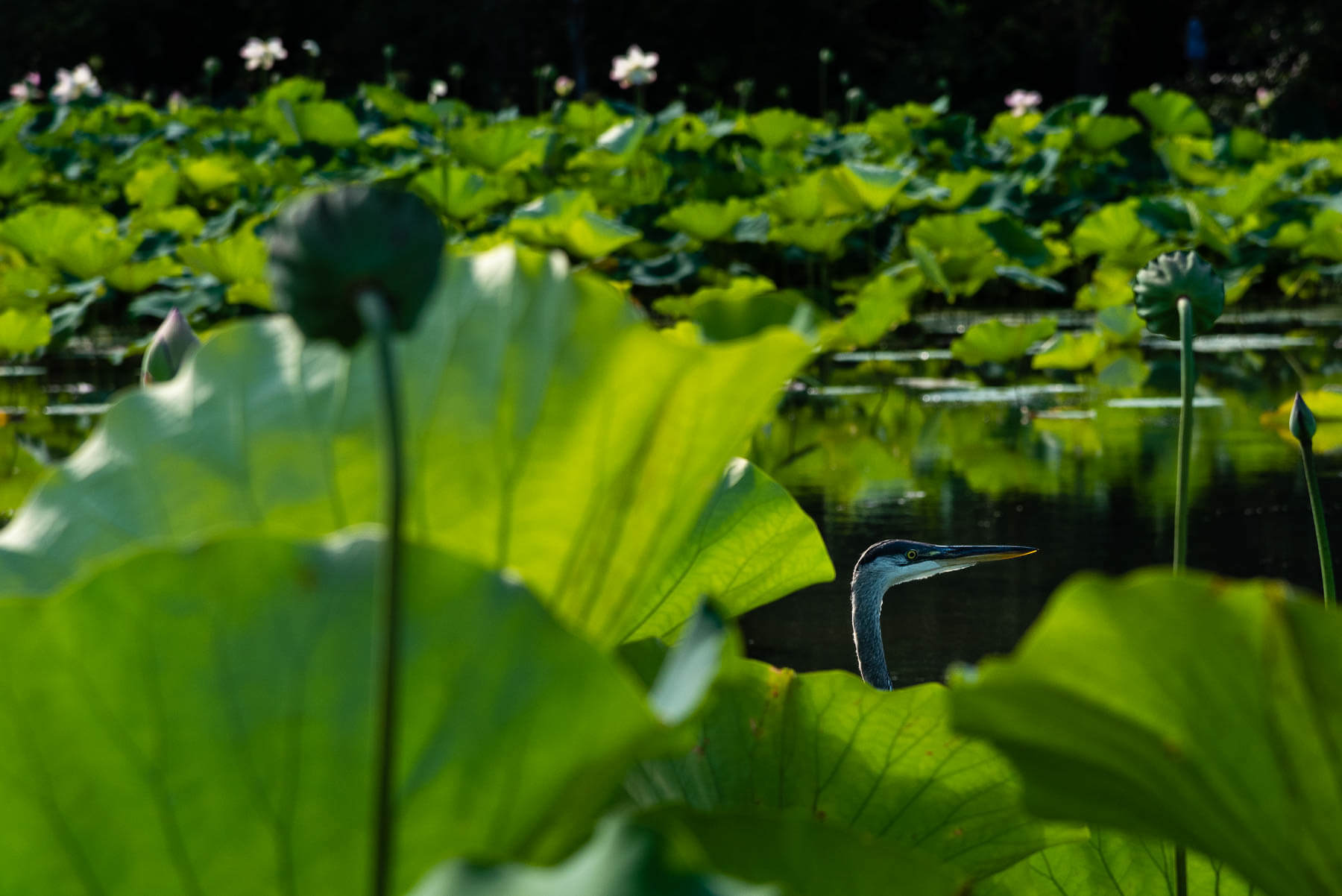 A great blue heron hunts at Kenilworth Aquatic Gardens in Washington, D.C., on Aug. 14, 2018. (Photo By Kaitlyn Dolan/Chesapeake Bay Program)
A great blue heron hunts at Kenilworth Aquatic Gardens in Washington, D.C., on Aug. 14, 2018. (Photo By Kaitlyn Dolan/Chesapeake Bay Program)
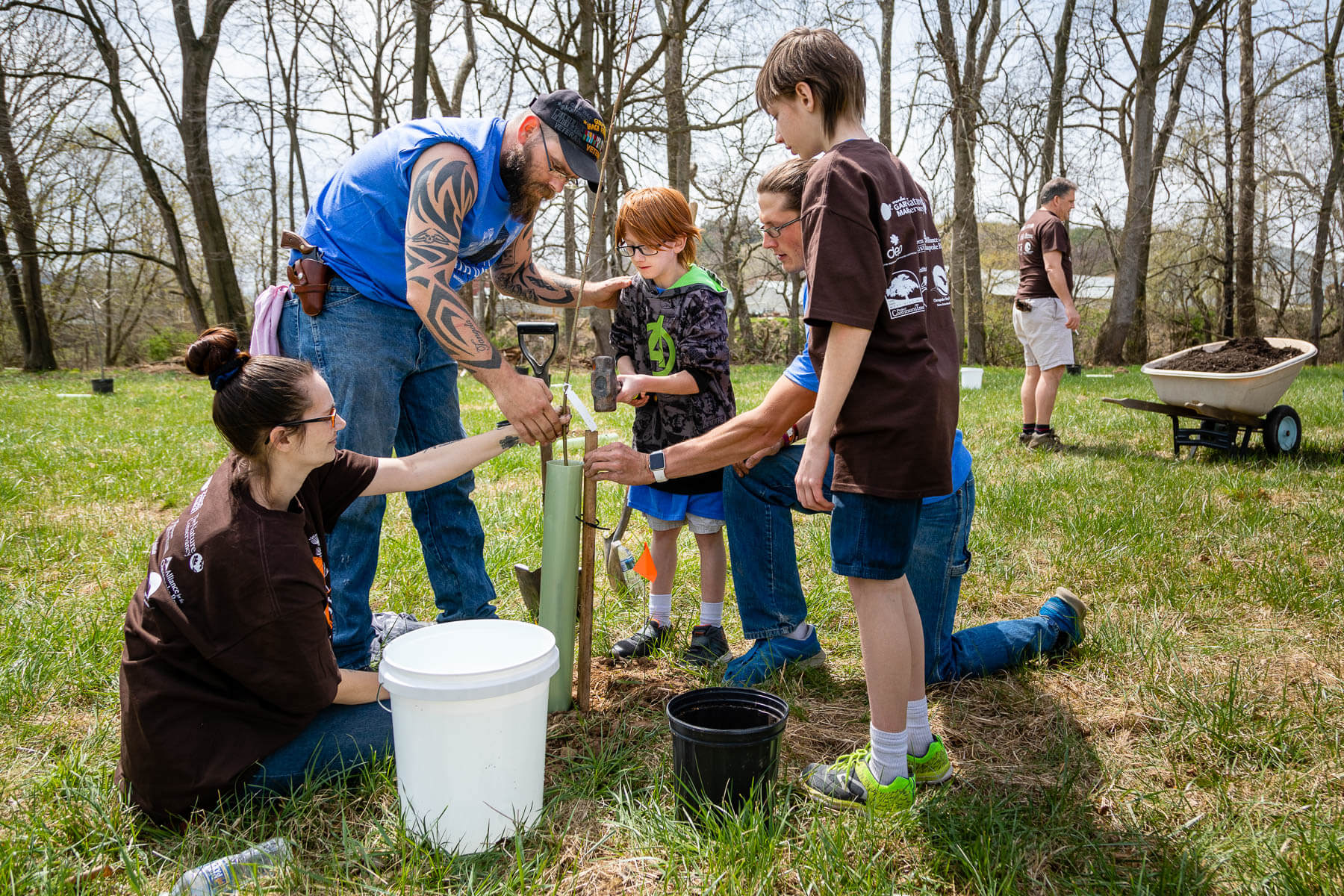 JoAnna and Will Fary, left, plant trees with the sons Justin, 10, and Nathan, 15, with guidance from George Maddox, a farm lead at Wardensville Garden Market during an Earth Day event in Wardensville, W.Va., on April 22, 2018. The trees will provide a riparian buffer between the 100-acre farm and the Cacapon River. (Photo by Will Parson/Chesapeake Bay Program)
JoAnna and Will Fary, left, plant trees with the sons Justin, 10, and Nathan, 15, with guidance from George Maddox, a farm lead at Wardensville Garden Market during an Earth Day event in Wardensville, W.Va., on April 22, 2018. The trees will provide a riparian buffer between the 100-acre farm and the Cacapon River. (Photo by Will Parson/Chesapeake Bay Program)
 Mebaa Braha, left, and Yeab Lemma play cornhole during Old Bay Day at The Sandlot in Baltimore on June 21, 2018. (Photo By Kaitlyn Dolan/Chesapeake Bay Program)
Mebaa Braha, left, and Yeab Lemma play cornhole during Old Bay Day at The Sandlot in Baltimore on June 21, 2018. (Photo By Kaitlyn Dolan/Chesapeake Bay Program)
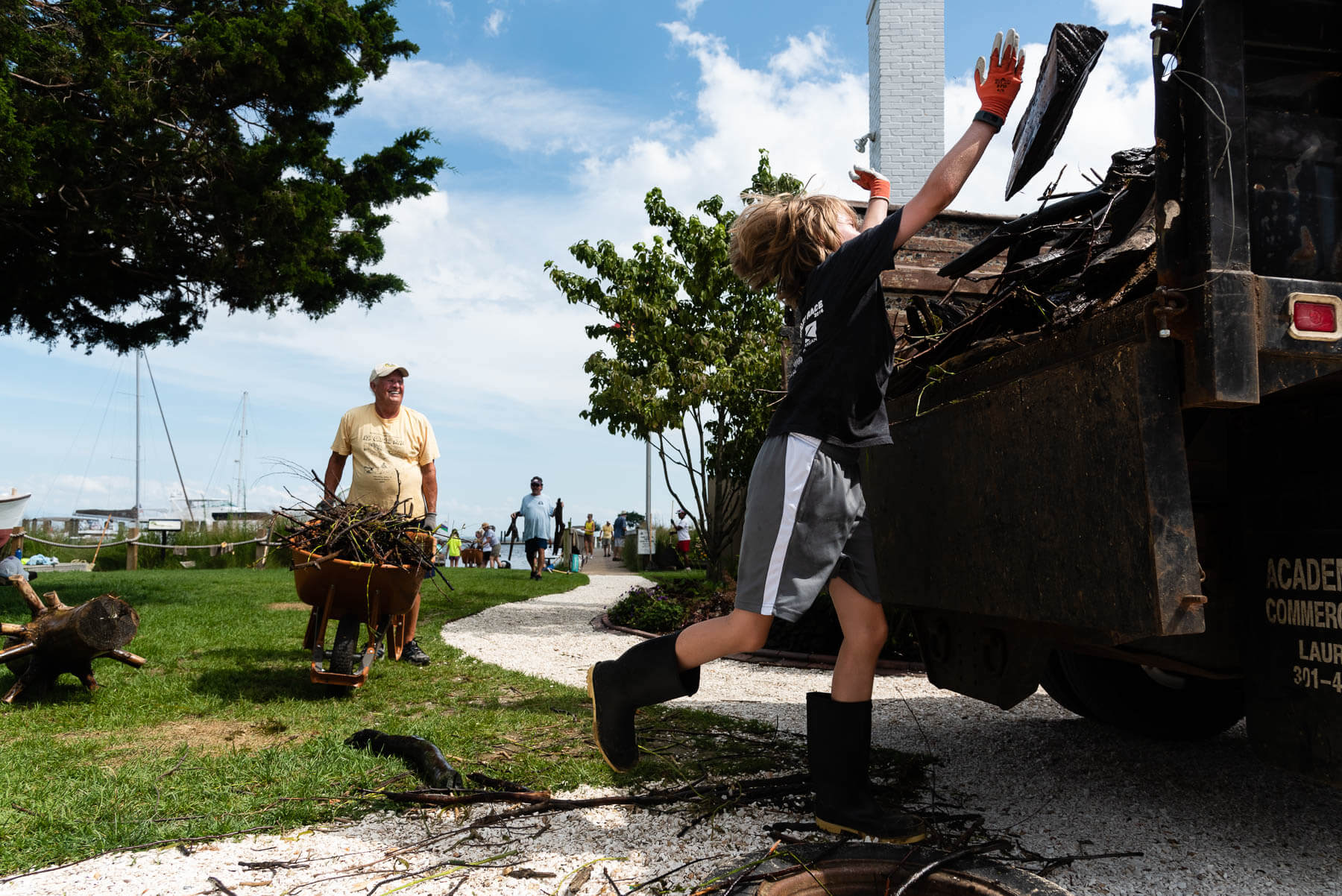 Following heavy rainfall, Max Shaffer, 10, disposes of driftwood collected by volunteers along the shoreline at the Annapolis Maritime Museum during a cleanup of debris released by the opening of floodgates at Conowingo Dam earlier in the week, in Annapolis, Md., on Aug. 2, 2018. (Photo by Kaitlyn Dolan/Chesapeake Bay Program)
Following heavy rainfall, Max Shaffer, 10, disposes of driftwood collected by volunteers along the shoreline at the Annapolis Maritime Museum during a cleanup of debris released by the opening of floodgates at Conowingo Dam earlier in the week, in Annapolis, Md., on Aug. 2, 2018. (Photo by Kaitlyn Dolan/Chesapeake Bay Program)
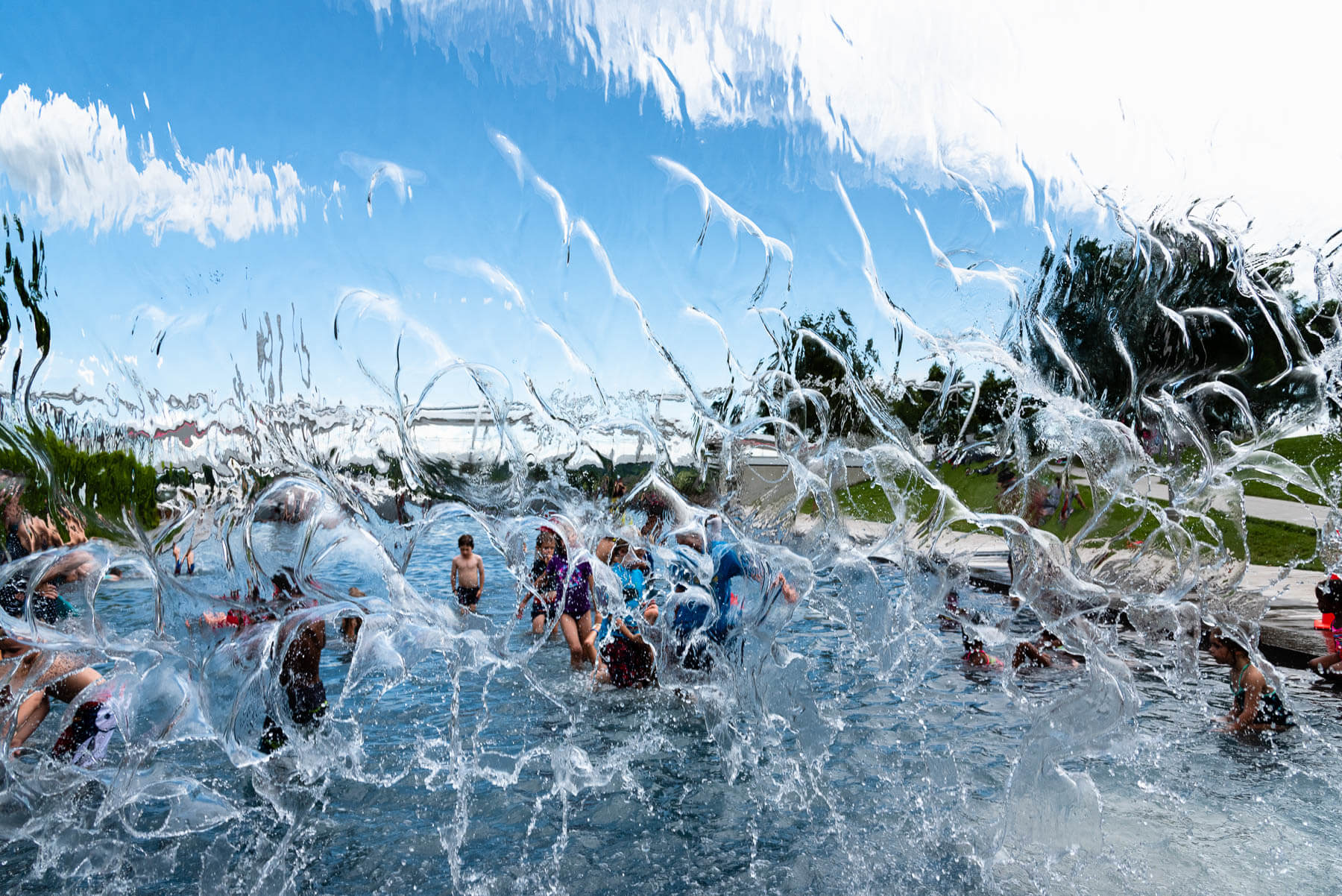 Visitors to Yards park in Washington, D.C., play in a fountain on June 5, 2018. (Photo By Kaitlyn Dolan/Chesapeake Bay Program)
Visitors to Yards park in Washington, D.C., play in a fountain on June 5, 2018. (Photo By Kaitlyn Dolan/Chesapeake Bay Program)
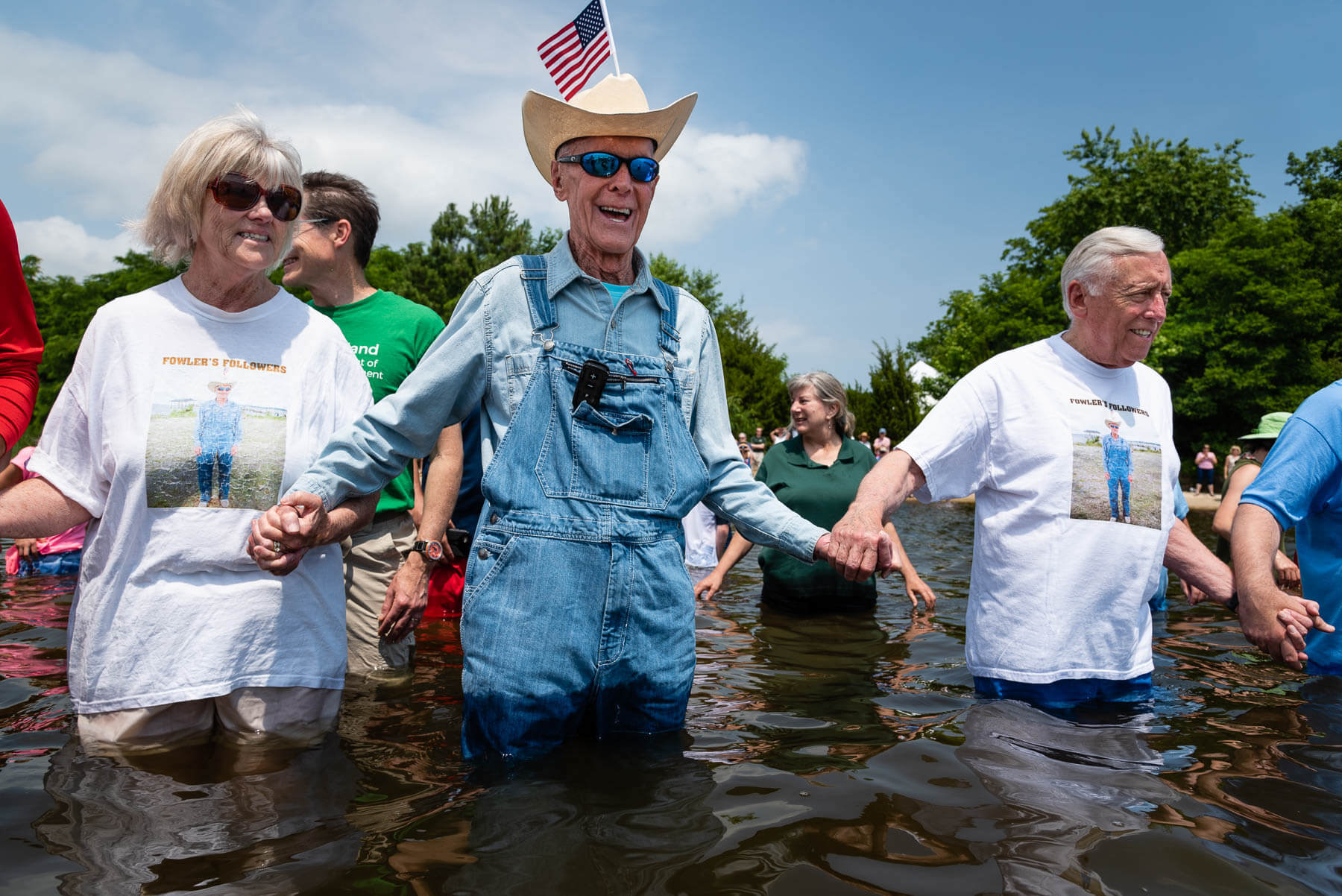 Bernie Fowler smiles as he wades into the Patuxent River during Bernie Fowler's 31st annual Wade-In at Jefferson Patterson Park in Calvert County, Md., on June 10, 2018. (Photo By Kaitlyn Dolan/Chesapeake Bay Program)
Bernie Fowler smiles as he wades into the Patuxent River during Bernie Fowler's 31st annual Wade-In at Jefferson Patterson Park in Calvert County, Md., on June 10, 2018. (Photo By Kaitlyn Dolan/Chesapeake Bay Program)
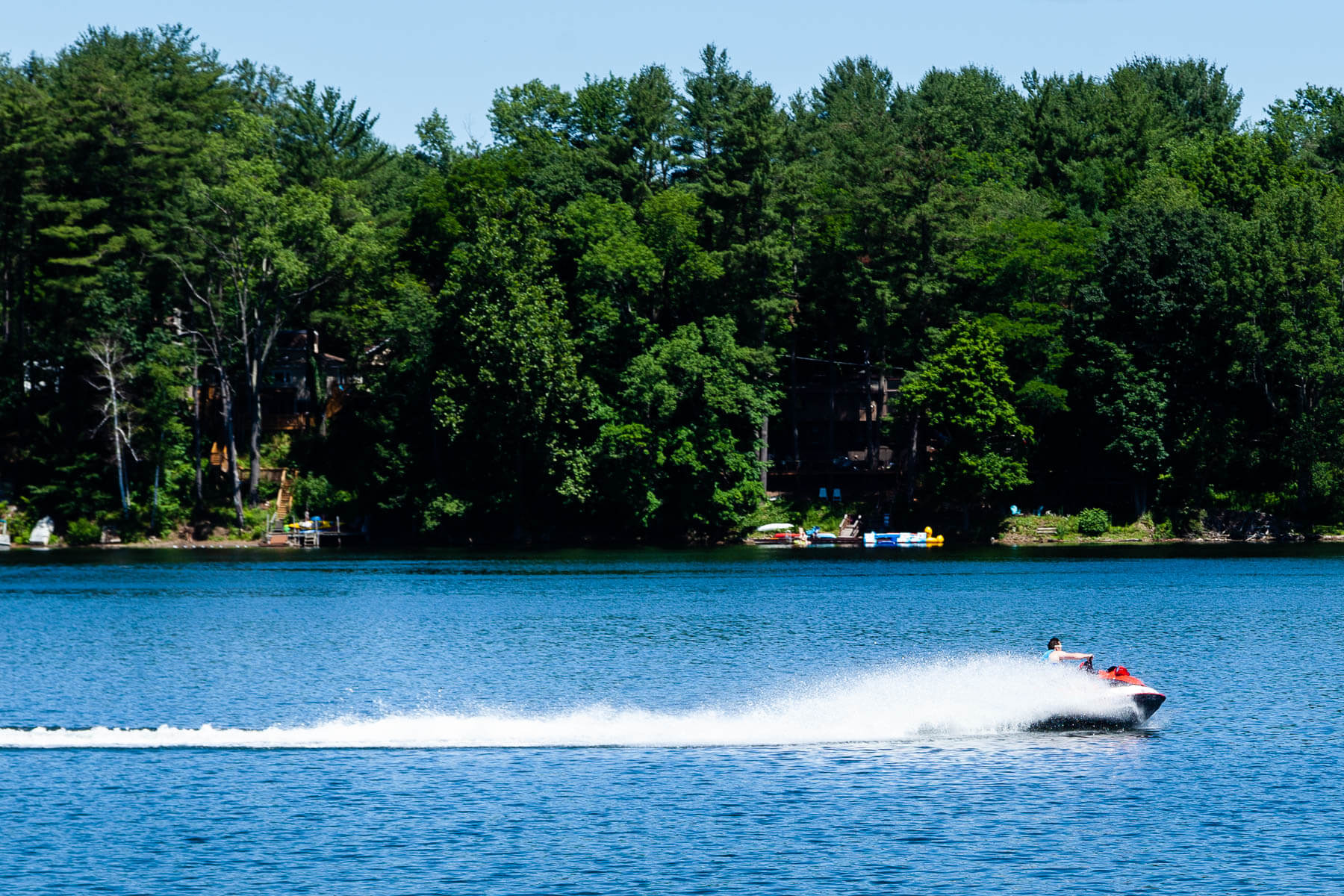 A visitor rides a jet ski on Goodyear Lake in Milford, N.Y., on July 7, 2018. (Photo By Rebecca Chillrud/Chesapeake Bay Program)
A visitor rides a jet ski on Goodyear Lake in Milford, N.Y., on July 7, 2018. (Photo By Rebecca Chillrud/Chesapeake Bay Program)
 Crosses mark 29 graves belonging to some of the first settlers who died in 1607 at Jamestown Island, Va., seen on April 30, 2018. The graveyard lies within the footprint of the original fort, unearthed by archaeologists from Jamestown Rediscovery in the 1990s. (Photo by Will Parson/Chesapeake Bay Program)
Crosses mark 29 graves belonging to some of the first settlers who died in 1607 at Jamestown Island, Va., seen on April 30, 2018. The graveyard lies within the footprint of the original fort, unearthed by archaeologists from Jamestown Rediscovery in the 1990s. (Photo by Will Parson/Chesapeake Bay Program)
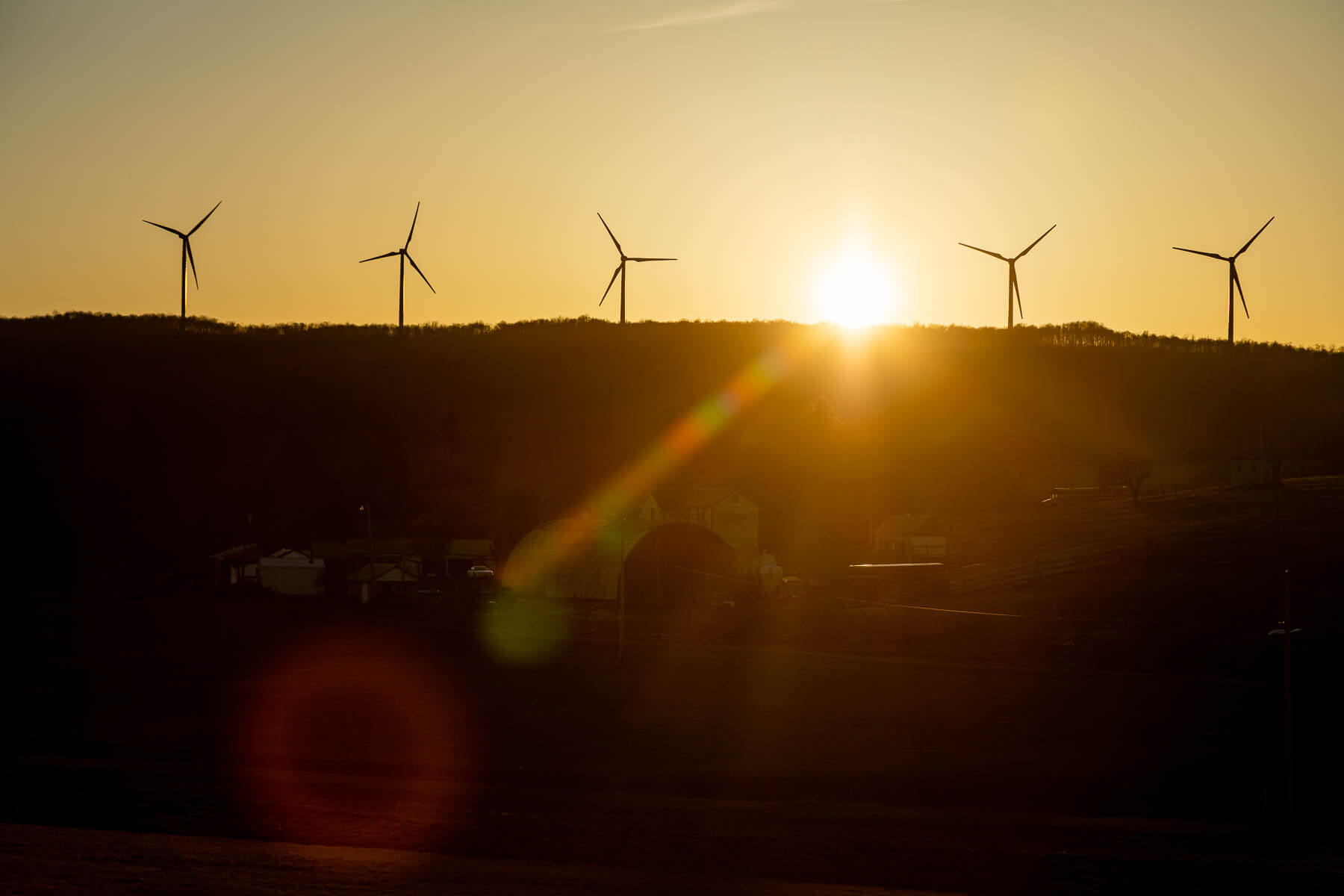 Wind turbines top a ridge in Garrett County, Md., in the North Branch Potomac River watershed on April 20, 2018. (Photo by Will Parson/Chesapeake Bay Program)
Wind turbines top a ridge in Garrett County, Md., in the North Branch Potomac River watershed on April 20, 2018. (Photo by Will Parson/Chesapeake Bay Program)
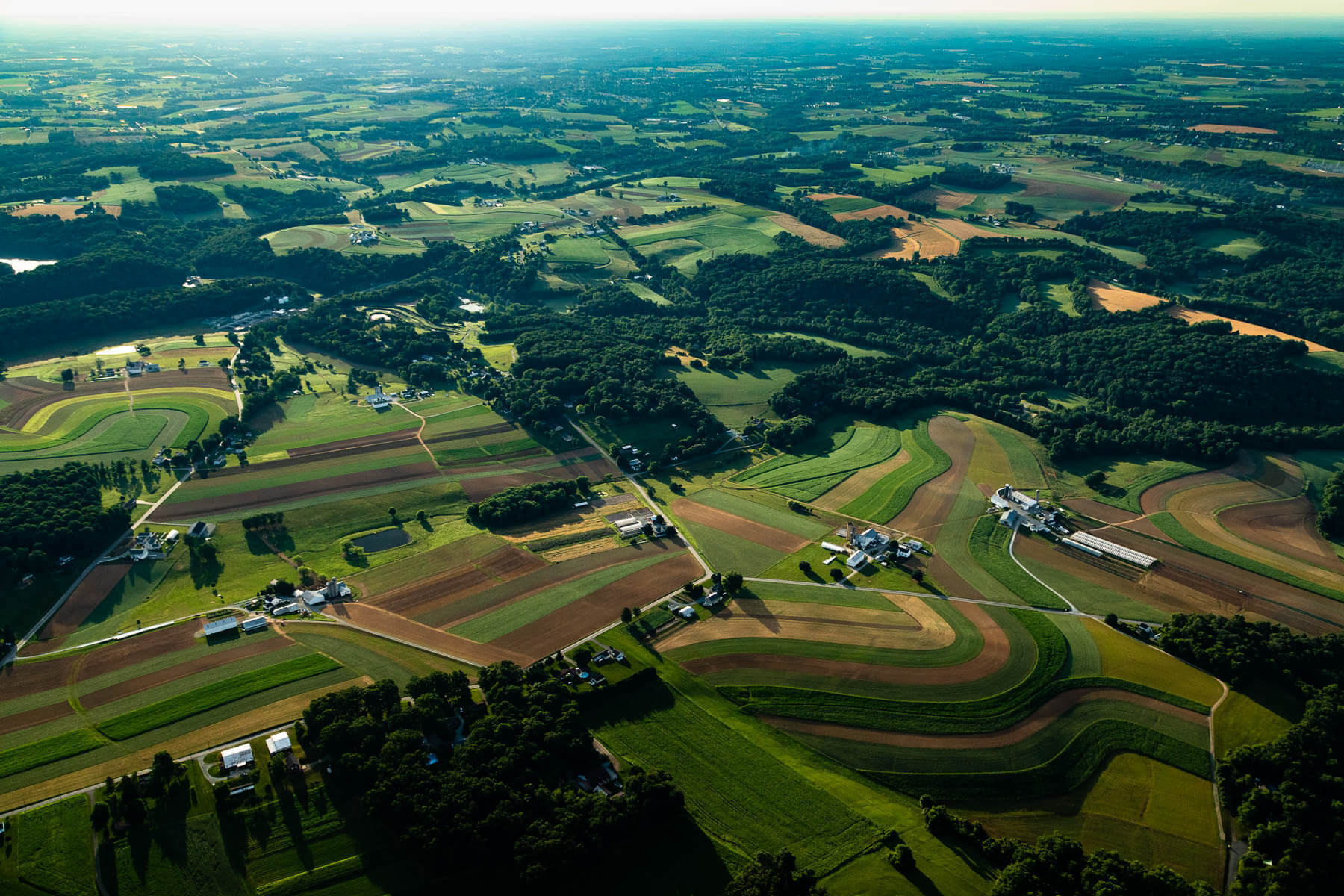 Farmland stretches across Lancaster County near Octoraro Lake in Pennsylvania on June 26, 2018. The Octoraro Watershed drains into the Susquehanna River just below Conowingo Dam, and nearly 70 percent of the farmers in the watershed are Plain Sect. (Photo by Will Parson/Chesapeake Bay Program)
Farmland stretches across Lancaster County near Octoraro Lake in Pennsylvania on June 26, 2018. The Octoraro Watershed drains into the Susquehanna River just below Conowingo Dam, and nearly 70 percent of the farmers in the watershed are Plain Sect. (Photo by Will Parson/Chesapeake Bay Program)
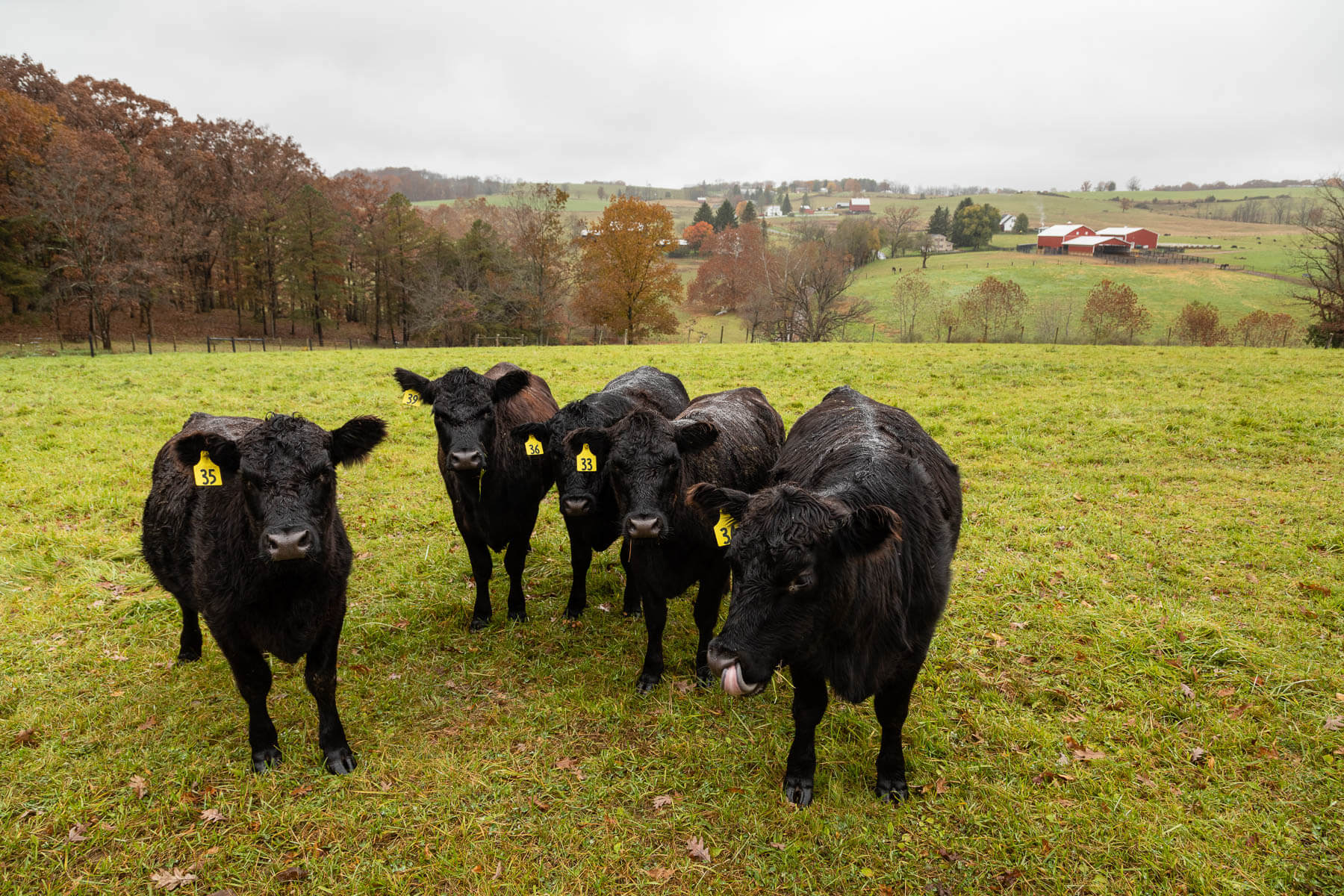 Pastures at Pine Draft Farm are rotationally grazed in Hampshire County, W.Va., on Nov. 5, 2018. The roughly 120-acre farm is owned by Brian Eglinger and his wife Kelli Eglinger, who permanently protected the farm from development by putting it into a conservation easement. "We have put enough time and effort into the farm, we wanted to see it stay like this," Eglinger said, noting the proximity to transit lines to Washington, D.C., and the potential for future development in the area. (Photo by Will Parson/Chesapeake Bay Program)
Pastures at Pine Draft Farm are rotationally grazed in Hampshire County, W.Va., on Nov. 5, 2018. The roughly 120-acre farm is owned by Brian Eglinger and his wife Kelli Eglinger, who permanently protected the farm from development by putting it into a conservation easement. "We have put enough time and effort into the farm, we wanted to see it stay like this," Eglinger said, noting the proximity to transit lines to Washington, D.C., and the potential for future development in the area. (Photo by Will Parson/Chesapeake Bay Program)
 Jaiden Lawrence, 7, visits a rain garden outside his residence in Lancaster, Pa., on Thursday evening. "He's always in there playing," said Jaiden's mother Kalanea Lawrence, who moved to Mulberry Street about six months ago. Jaiden said he likes to water the plants as well as other flowers growing in the neighborhood. Lancaster has implemented 80 stormwater projects since 2012, including tree plantings, green roofs and permeable pavement to address a combined sewage and stormwater pollution problem that was sending hundreds of millions of gallons a year into the Conestoga River. The city's plan calls for green infrastrucutre to not only treat pollution but make the city more livable and sustainable. (Photo by Will Parson/Chesapeake Bay Program)
Jaiden Lawrence, 7, visits a rain garden outside his residence in Lancaster, Pa., on Thursday evening. "He's always in there playing," said Jaiden's mother Kalanea Lawrence, who moved to Mulberry Street about six months ago. Jaiden said he likes to water the plants as well as other flowers growing in the neighborhood. Lancaster has implemented 80 stormwater projects since 2012, including tree plantings, green roofs and permeable pavement to address a combined sewage and stormwater pollution problem that was sending hundreds of millions of gallons a year into the Conestoga River. The city's plan calls for green infrastrucutre to not only treat pollution but make the city more livable and sustainable. (Photo by Will Parson/Chesapeake Bay Program)
 “Turtle” by artist Nessar Jahanbin decorates a storm drain in Washington, D.C., one of 20 designs chosen in a contest by the nonprofit @AnacostiaWS, seen on Feb. 13, 2018. The mural was funded by the Carter Family Foundation and a D.C. Department of Energy and Environment Community Stormwater Solutions grant. (Photo by Will Parson/Chesapeake Bay Program)
“Turtle” by artist Nessar Jahanbin decorates a storm drain in Washington, D.C., one of 20 designs chosen in a contest by the nonprofit @AnacostiaWS, seen on Feb. 13, 2018. The mural was funded by the Carter Family Foundation and a D.C. Department of Energy and Environment Community Stormwater Solutions grant. (Photo by Will Parson/Chesapeake Bay Program)
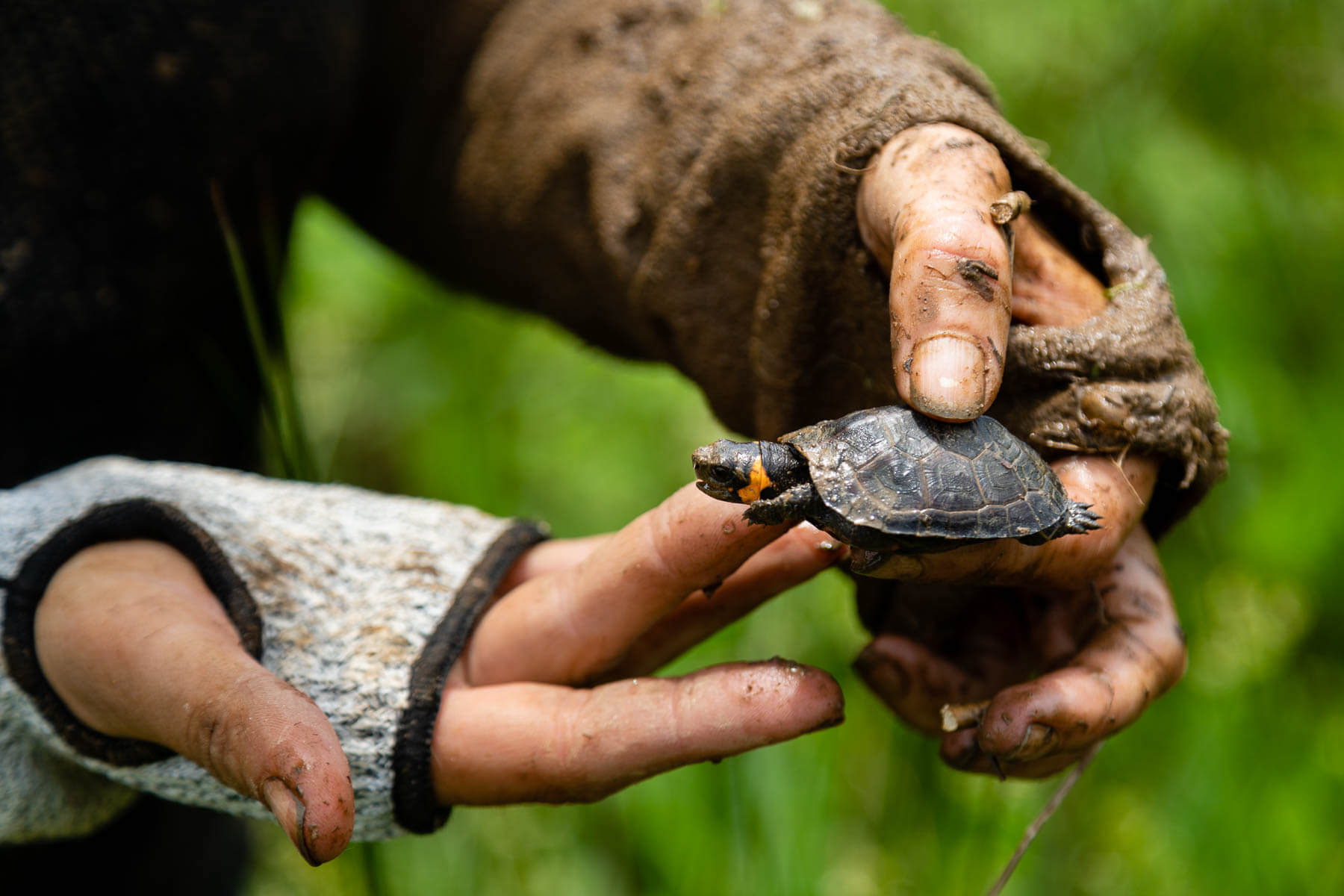 Environmental scientist Amy Nazdrowicz holds a one-year-old bog turtle she found while surveying a wetland habitat in Harford County, Md., on May 29, 2018. Bog turtles are North America's smallest turtle species but are a federally endangered species due to habitat loss and poaching for the pet trade. (Photo by Will Parson/Chesapeake Bay Program)
Environmental scientist Amy Nazdrowicz holds a one-year-old bog turtle she found while surveying a wetland habitat in Harford County, Md., on May 29, 2018. Bog turtles are North America's smallest turtle species but are a federally endangered species due to habitat loss and poaching for the pet trade. (Photo by Will Parson/Chesapeake Bay Program)
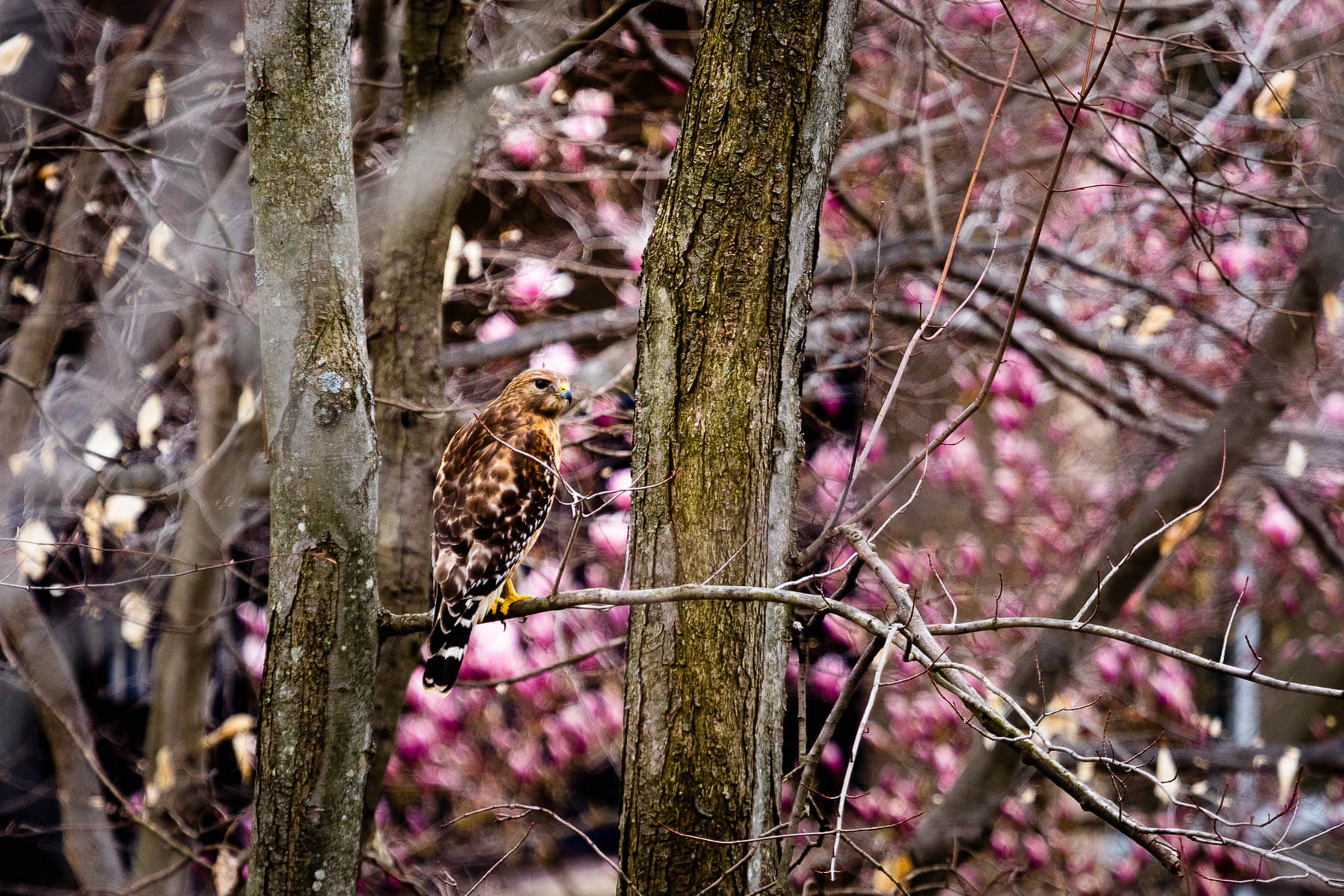 A red-shouldered hawk visits a forested portion of a residential complex in Annapolis, Md., on April 1, 2018. (Photo by Will Parson/Chesapeake Bay Program)
A red-shouldered hawk visits a forested portion of a residential complex in Annapolis, Md., on April 1, 2018. (Photo by Will Parson/Chesapeake Bay Program)
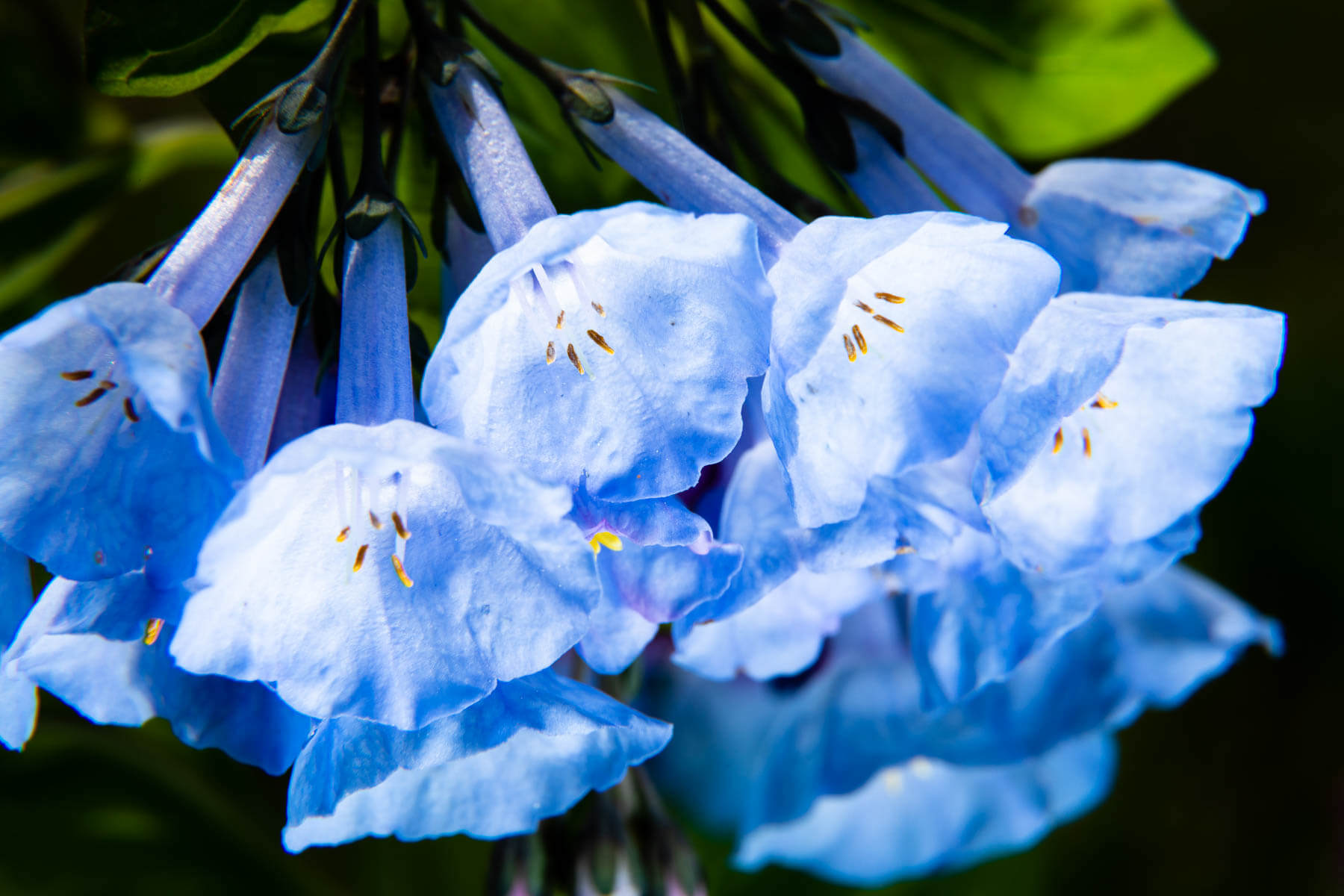 Virginia bluebells bloom at Wardensville Garden Market in Wardensville, W.Va., on April 22, 2018. (Photo by Will Parson/Chesapeake Bay Program)
Virginia bluebells bloom at Wardensville Garden Market in Wardensville, W.Va., on April 22, 2018. (Photo by Will Parson/Chesapeake Bay Program)
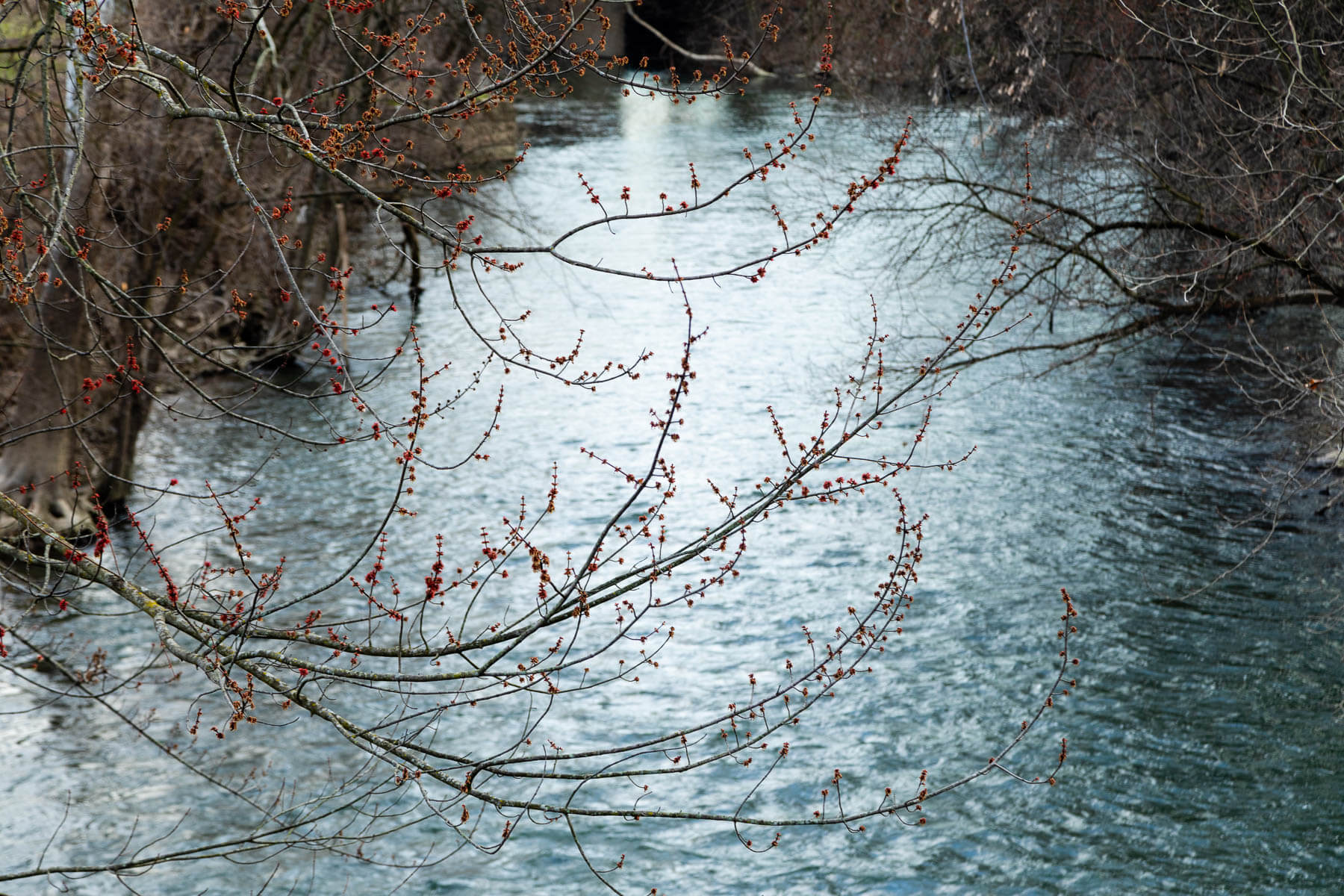 Red maple buds extend above Kishacoquillas Creek near its confluence with the Juniata River in Lewistown, Pa., on April 10, 2018. In 2010, Western Pennsylvania Conservancy received a Chesapeake Bay Small Watersheds Grant for $50,000 from the National Fish & Widlife Foundation to implement conservation practices on four farms in order to improve the health of Kishacoquillas Creek and downstream waterways. The project supported the installation of 7,080 feet of streambank fencing as well as other measures to reduce livestock impacts on streams, stabilize streambanks, and provide habitat for fish. (Photo by Will Parson/Chesapeake Bay Program)
Red maple buds extend above Kishacoquillas Creek near its confluence with the Juniata River in Lewistown, Pa., on April 10, 2018. In 2010, Western Pennsylvania Conservancy received a Chesapeake Bay Small Watersheds Grant for $50,000 from the National Fish & Widlife Foundation to implement conservation practices on four farms in order to improve the health of Kishacoquillas Creek and downstream waterways. The project supported the installation of 7,080 feet of streambank fencing as well as other measures to reduce livestock impacts on streams, stabilize streambanks, and provide habitat for fish. (Photo by Will Parson/Chesapeake Bay Program)
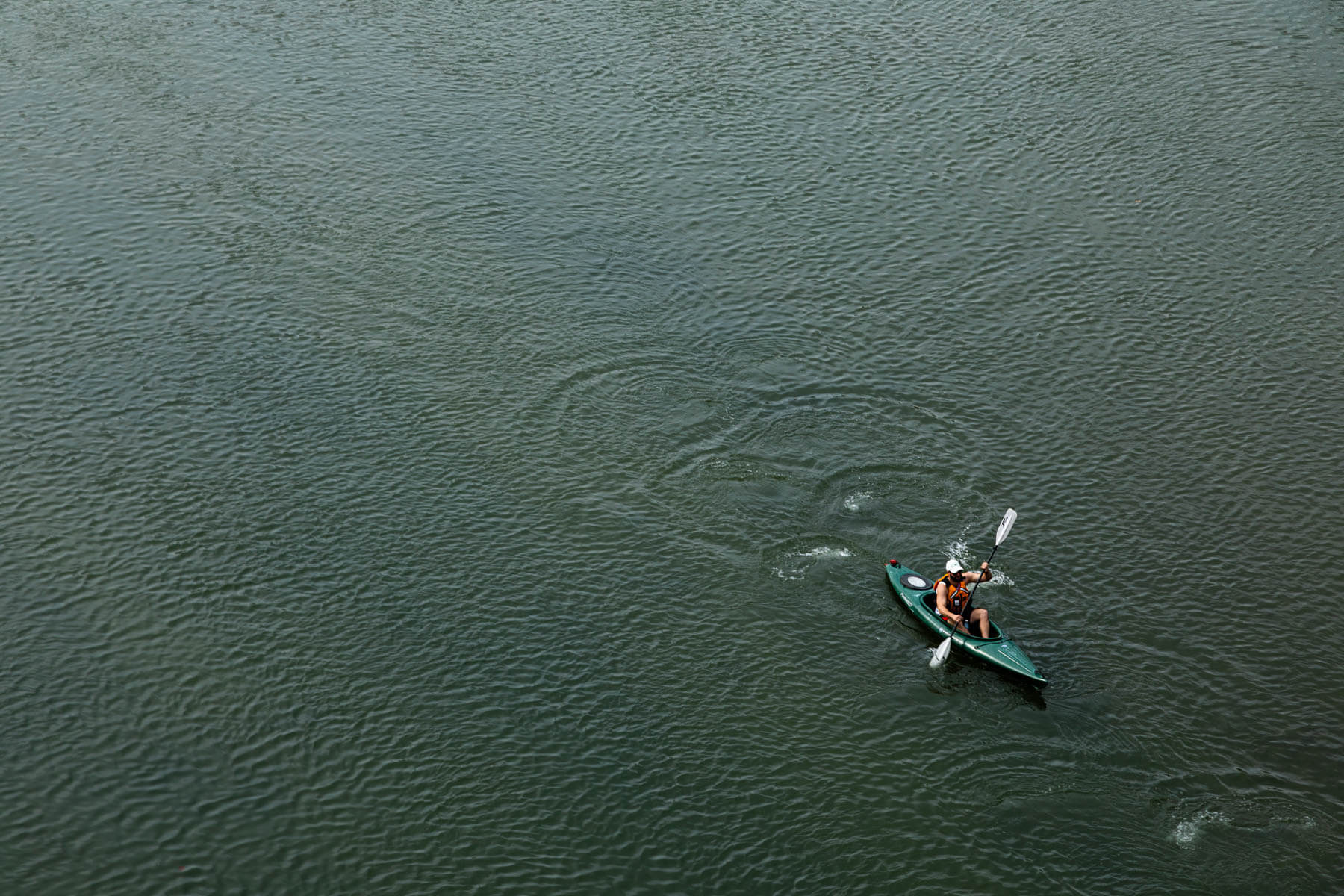 A kayaker paddles downstream on the North Fork Shenandoah River near its confluence with the South Fork in Front Royal, Va., on April 22, 2018. (Photo by Will Parson/Chesapeake Bay Program)
A kayaker paddles downstream on the North Fork Shenandoah River near its confluence with the South Fork in Front Royal, Va., on April 22, 2018. (Photo by Will Parson/Chesapeake Bay Program)
 Sunset near the offices of the Chesapeake Bay Progam in Annapolis, Md., draws spectators on Nov. 6, 2018. (Photo by Will Parson/Chesapeake Bay Program)
Sunset near the offices of the Chesapeake Bay Progam in Annapolis, Md., draws spectators on Nov. 6, 2018. (Photo by Will Parson/Chesapeake Bay Program)

Comments
Awesome collection Will! Love them all but especially the snow geese and Anacostia youth shots! It’s a privilege to have you working for us at the Chesapeake Bay Program Partnership!
Will,
We've never met but this is a wonderful compendium, and I envy that you were able to do this imaging as part or your job. In my 48 years on the Chesapeake (16 with CBPO) I was able to gather many thousand images, but it was all cannibalized, on the sly or by chance and on my own wallet. Such a great thing that the Program recognizes how powerful this stuff can be. Enjoy every minute of it; you're right up there with Dave Harp!
What a spectacular collection from thorough out the watershed! Our beautiful land and people!
Will,
Thank you for your beautiful photoessay on the Chesapeake Bay watershed. You have captured the essence of where we live — both its beauty and our challenges.
Really enjoyed them!! Thanks!!
Thank you!
Your comment has been received. Before it can be published, the comment will be reviewed by our team to ensure it adheres with our rules of engagement.
Back to recent stories